My architectural guide to must-see buildings in Ljubljana
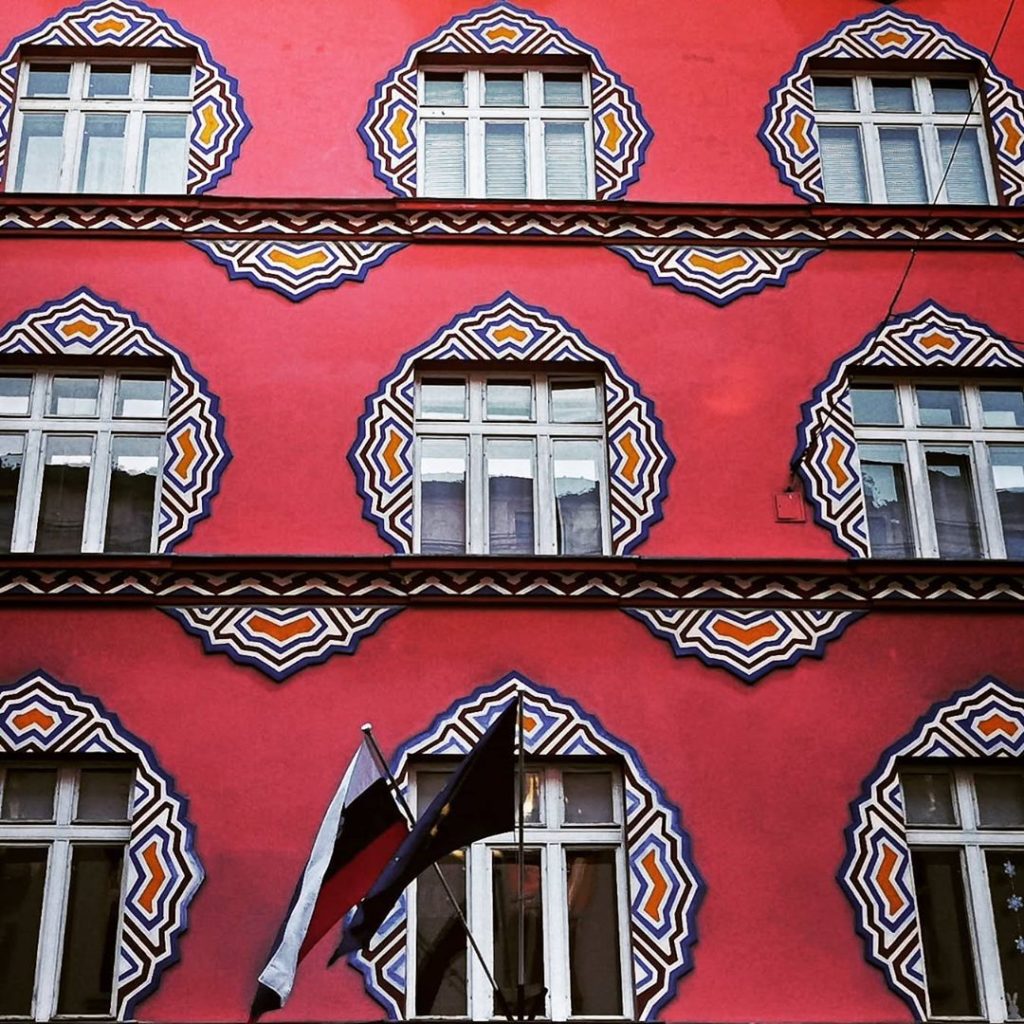
Here you’ll find the most beautiful buildings in Slovenia’s capital. They are located in the centre of Ljubljana and are easy to find. Here you can read about their history, some of which is unique, and anecdotes about each building.
These seven buildings add to the beauty of Ljubljana’s city centre and make for an exciting visit.
The shimmering Cooperative Bank
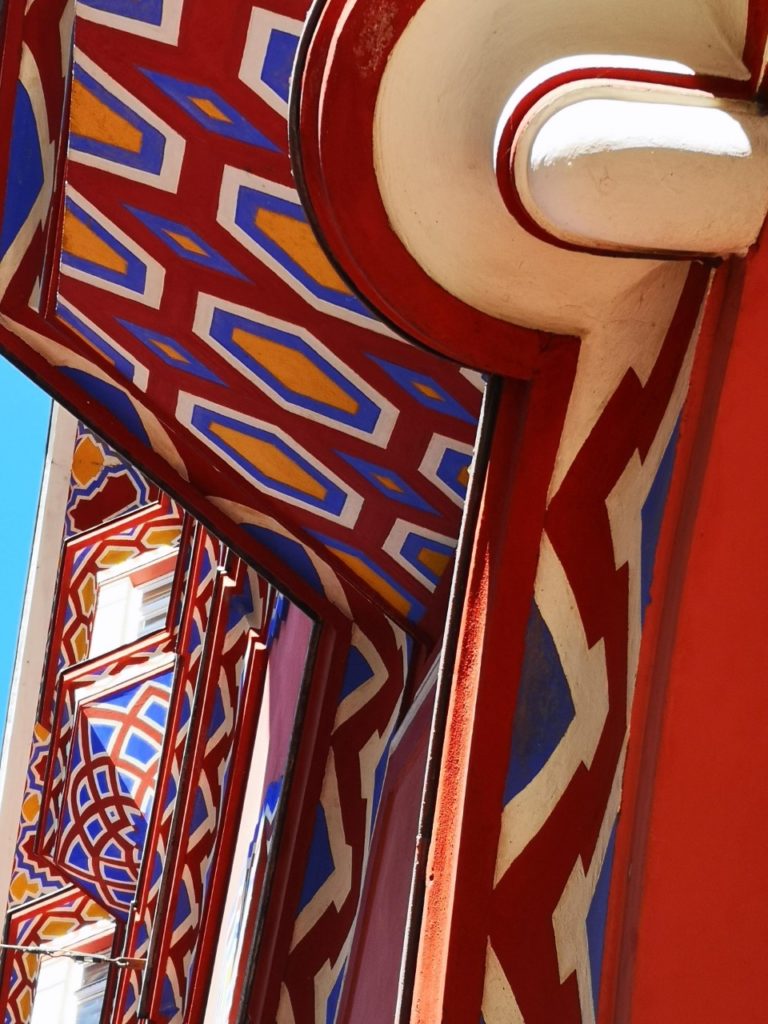
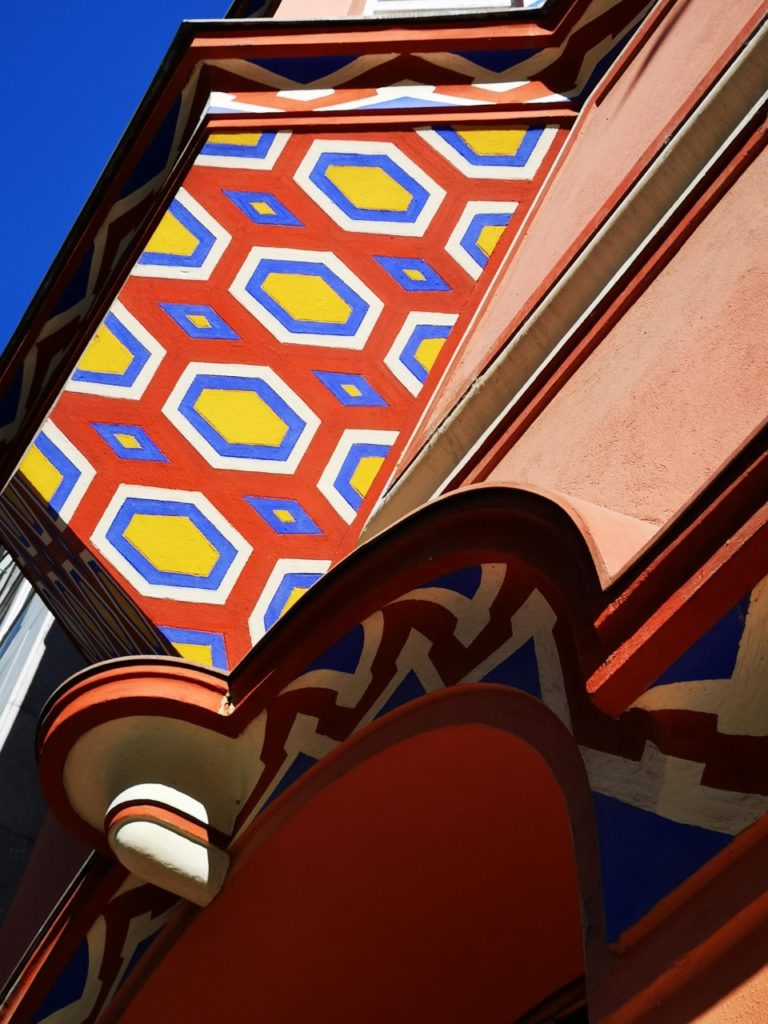
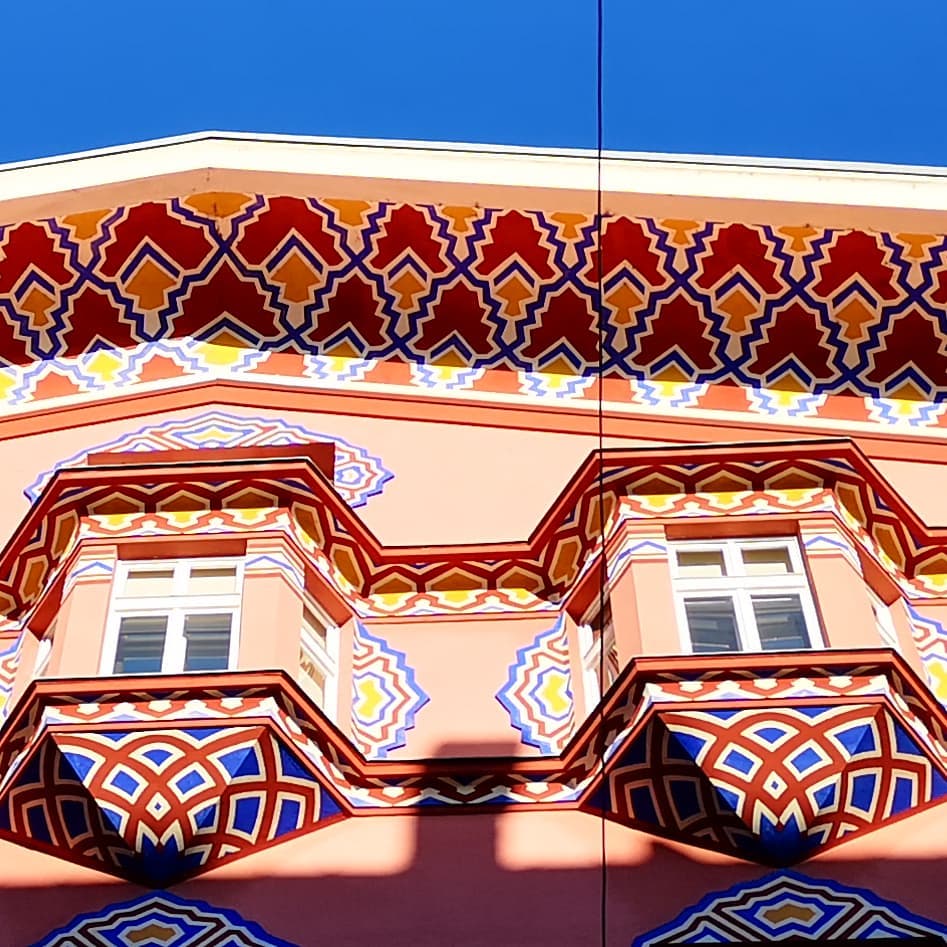
The Cooperative Bank (1921) is the most astonishing building in Ljubljana, and the one you should see first. It is the most colourful building in Ljubljana and the most unusual to the eye. It’s impossible not to look away and admire it as you walk past, as the building’s shimmering colours contrast with the other, more sober facades.
It is surrounded by three magnificent buildings, the Union Hotel, another bank and the Centromerkur, which was Ljubljana’s first department stores’ in 1903.
To dress his building in colour, Ivan Vurnik chose rich, colourful decorations derived from traditional motifs used in Slovenian embroidery. His wife, Helena Vurnik, was a painter and greatly assisted him in creating these motifs.
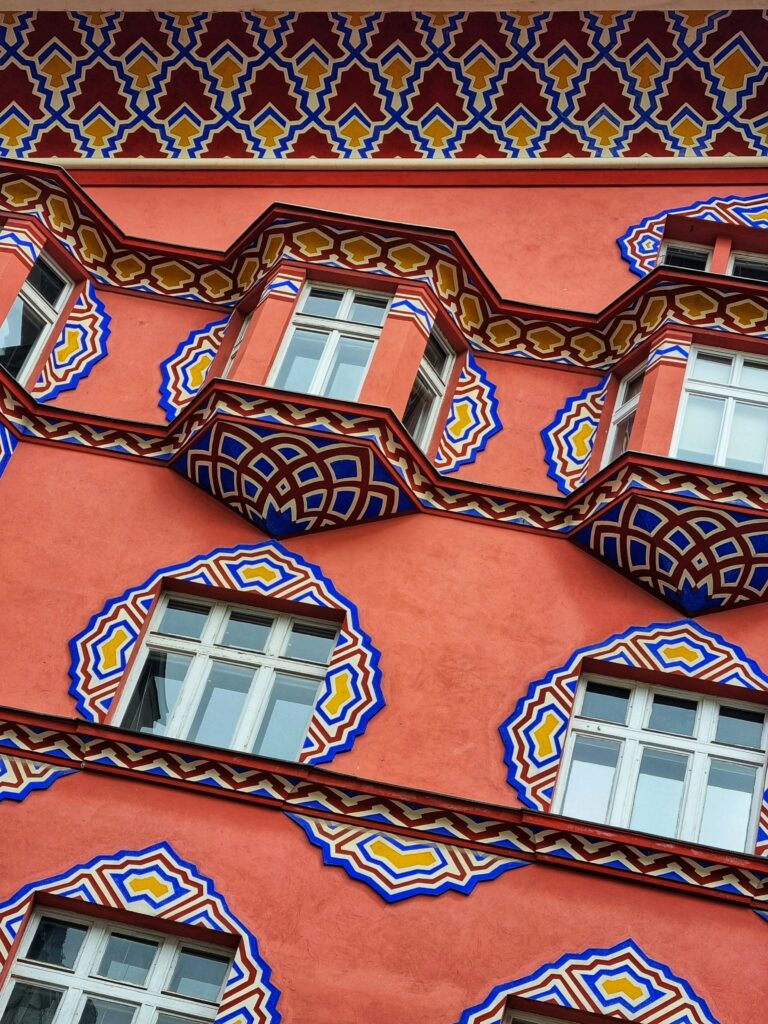
This building is one of the best examples of what is known as the “national style” in Slovenian architecture. Ivan Vurnik began developing this particular style on his return from Vienna, and continued in this vein until 1925.
The influence of German Expressionism and Czechoslovak Cubism can be discerned in Vurnik’s work.
Unfortunately, you can’t visit the interior of the cooperative bank, but I did have the opportunity to go in once, and there are some very colourful national motifs in the main hall, the entrance hall and sections of the staircase.
The other pretty buildings in Miklošičeva cesta (the ones next door)
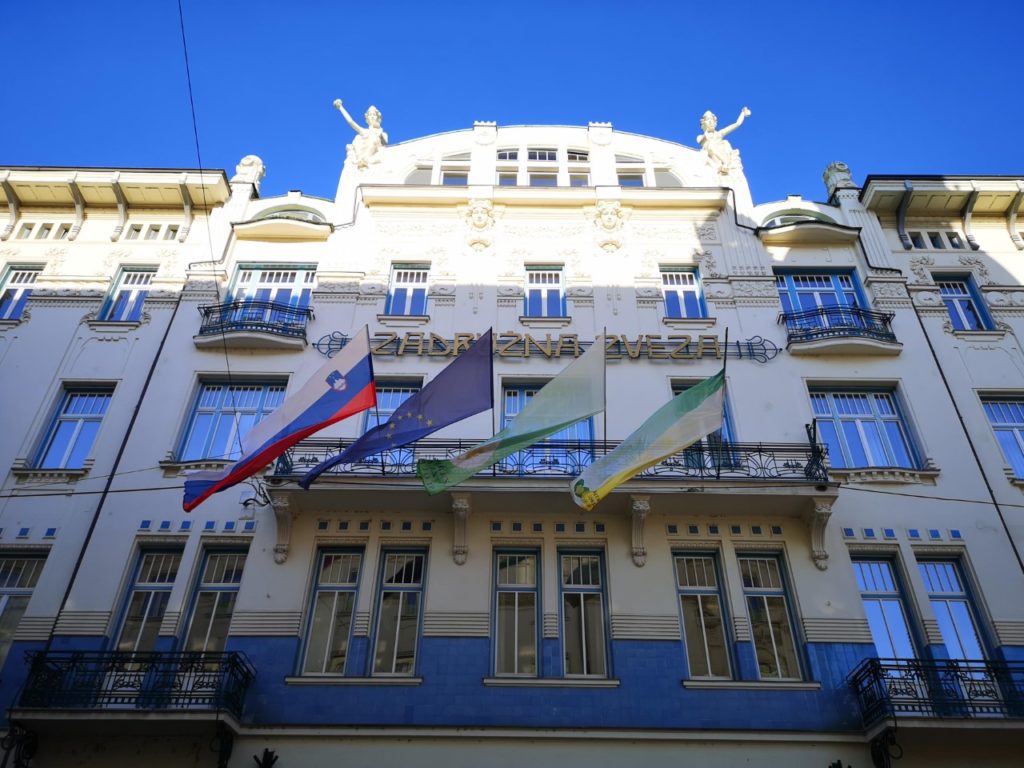
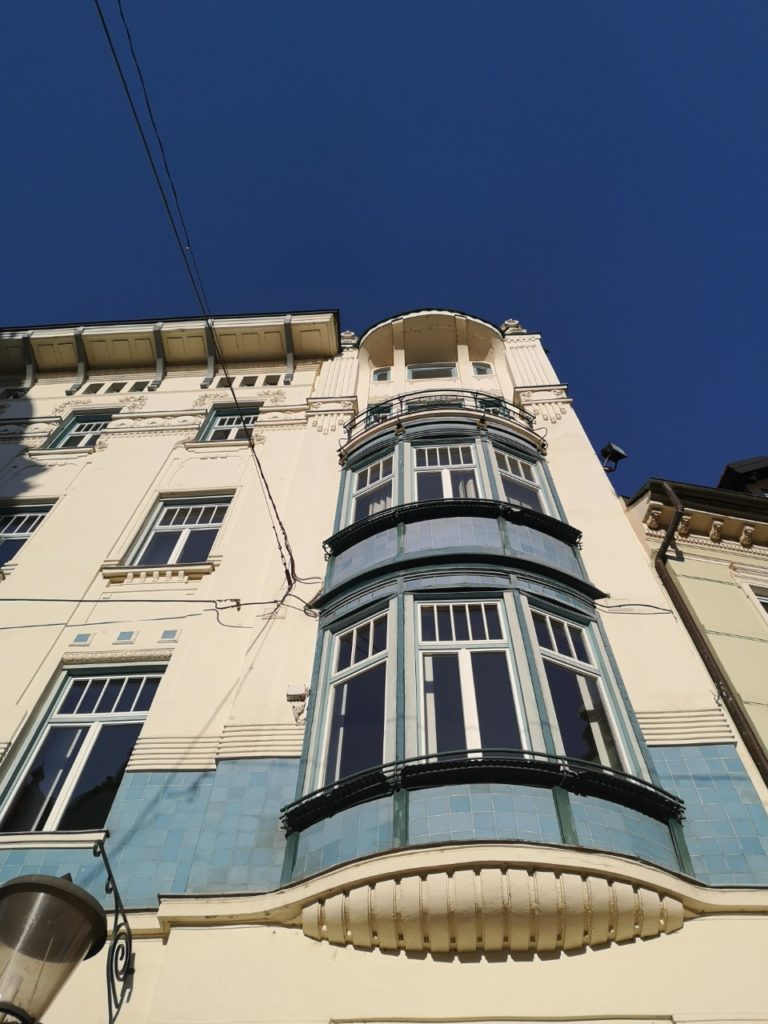
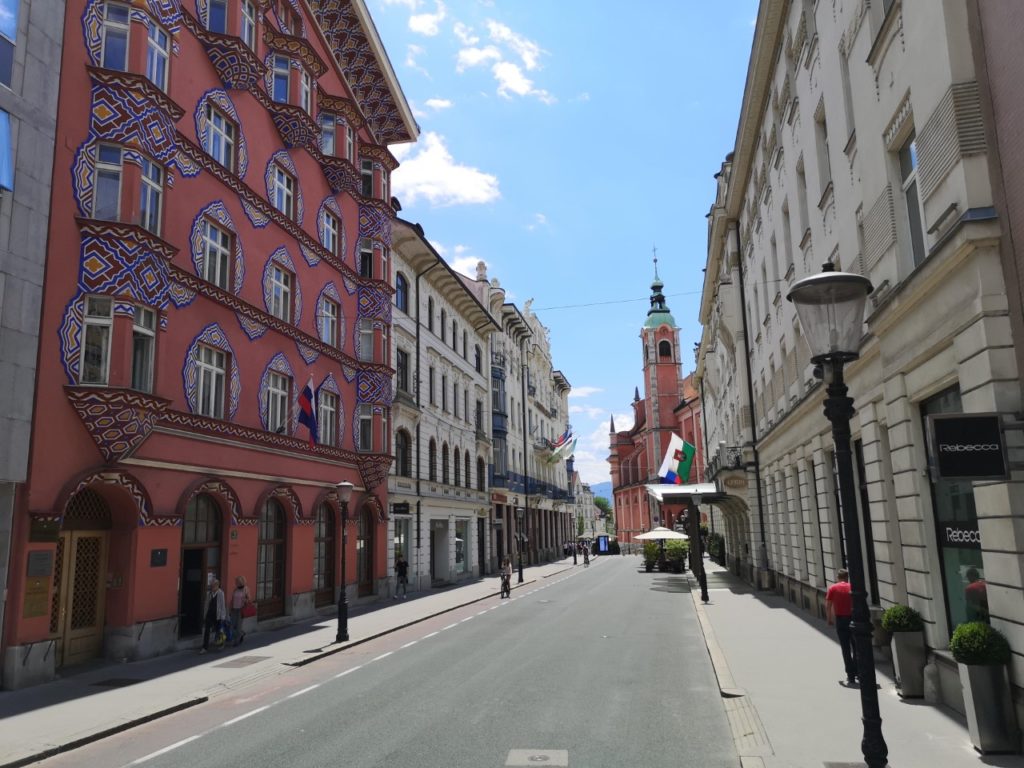
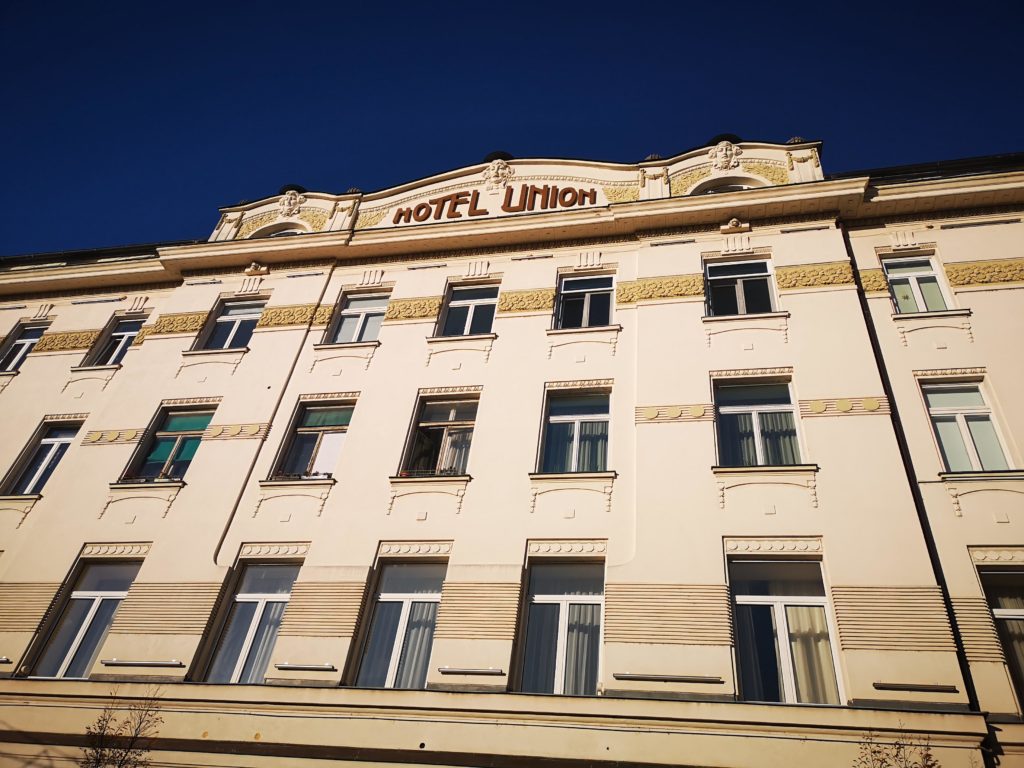
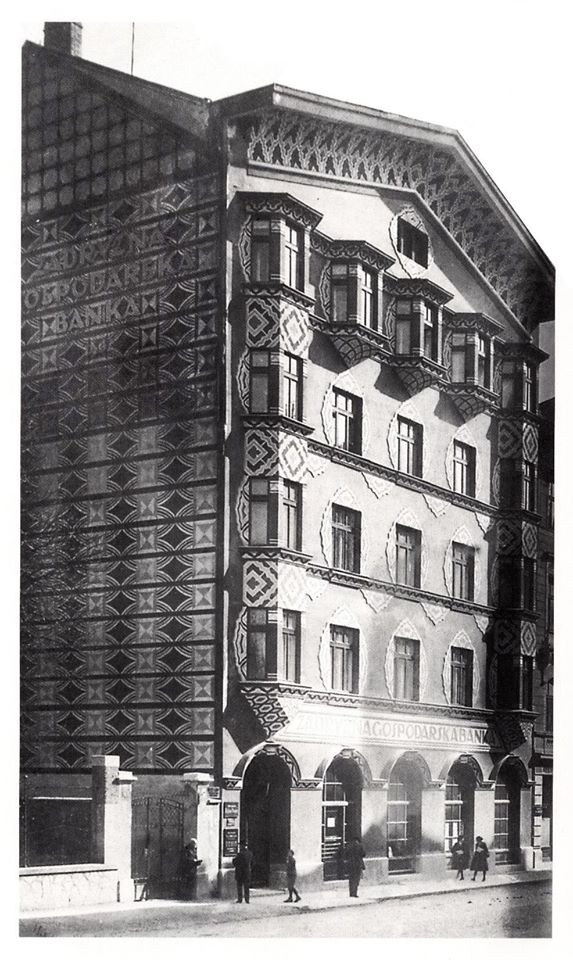
As you can see in this photo, the Cooperative Bank (1921) was also painted on the sides, but unfortunately these beautiful paintings can no longer be seen today.
Plecnik’s three bridges, a strong Venetian style
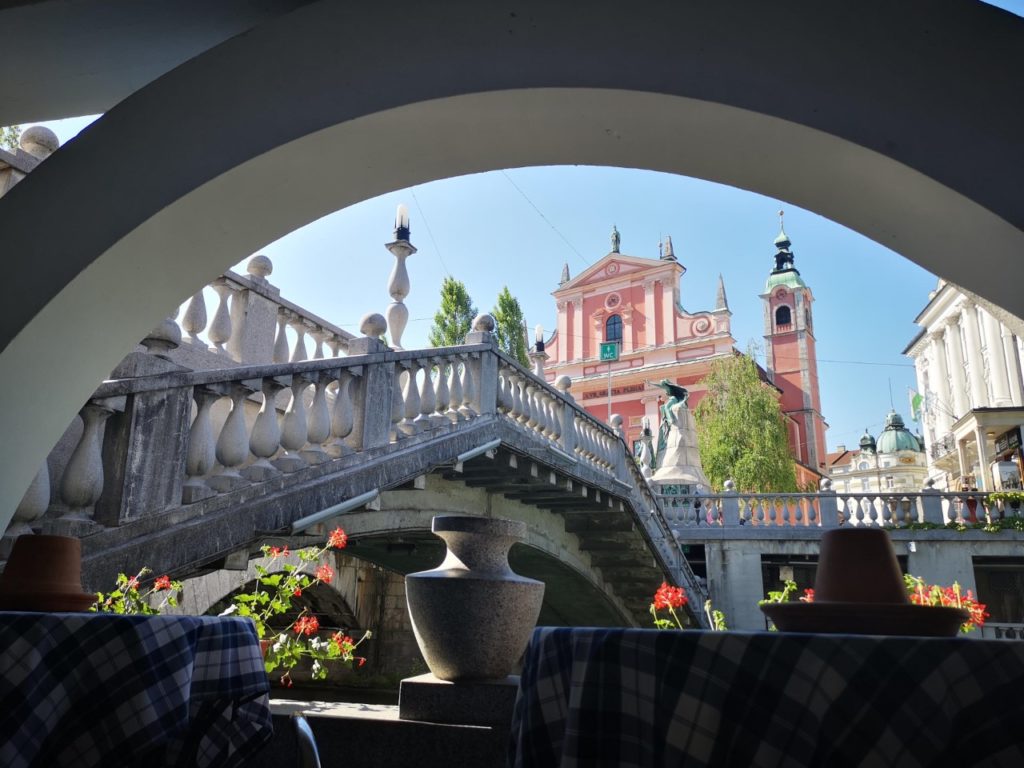
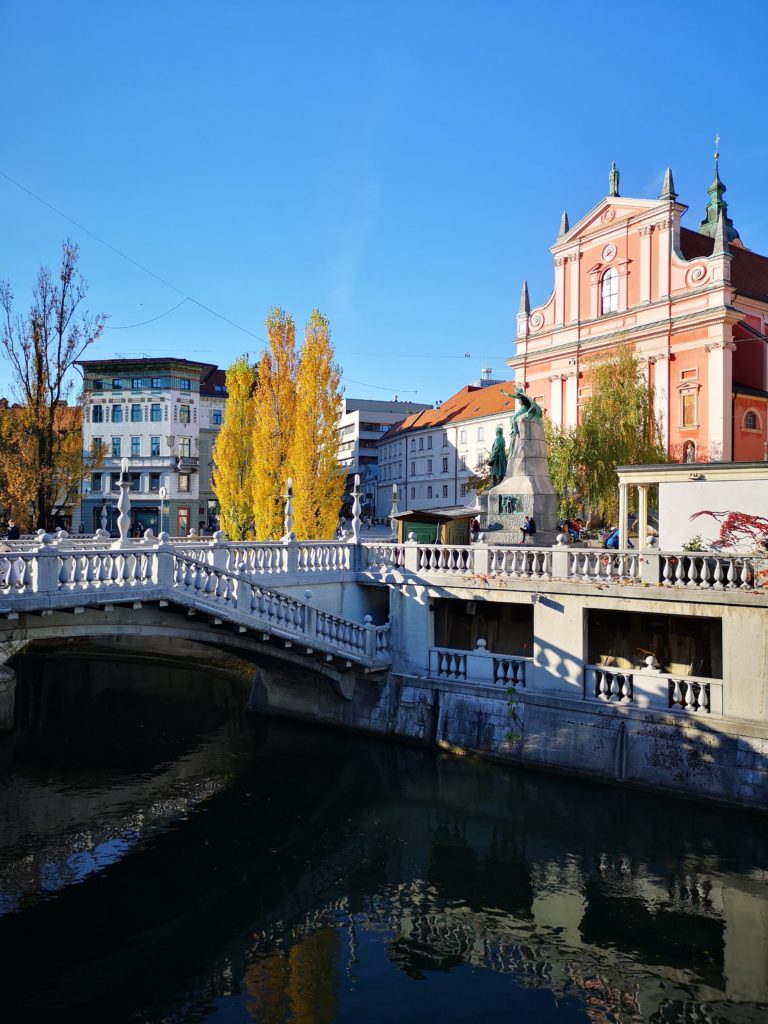
The three bridges (1932) are the centrepiece of old Ljubljana. It’s a place you pass several times a day when you live in the Slovenian capital, as I do. It’s also the place where the people of Ljubljana meet their friends for a coffee afterwards.
During your stay, you’re bound to cross these bridges several times.
But why three bridges in one place rather than one? After the First World War, the old Karl bridge (Karlov most) became a traffic chokepoint. It was too small! A larger bridge was needed. The architect, Jože Plečnik, came up with an idea that was as astonishing as it was ingenious: keep the existing bridge, give it a makeover and add two small bridges.
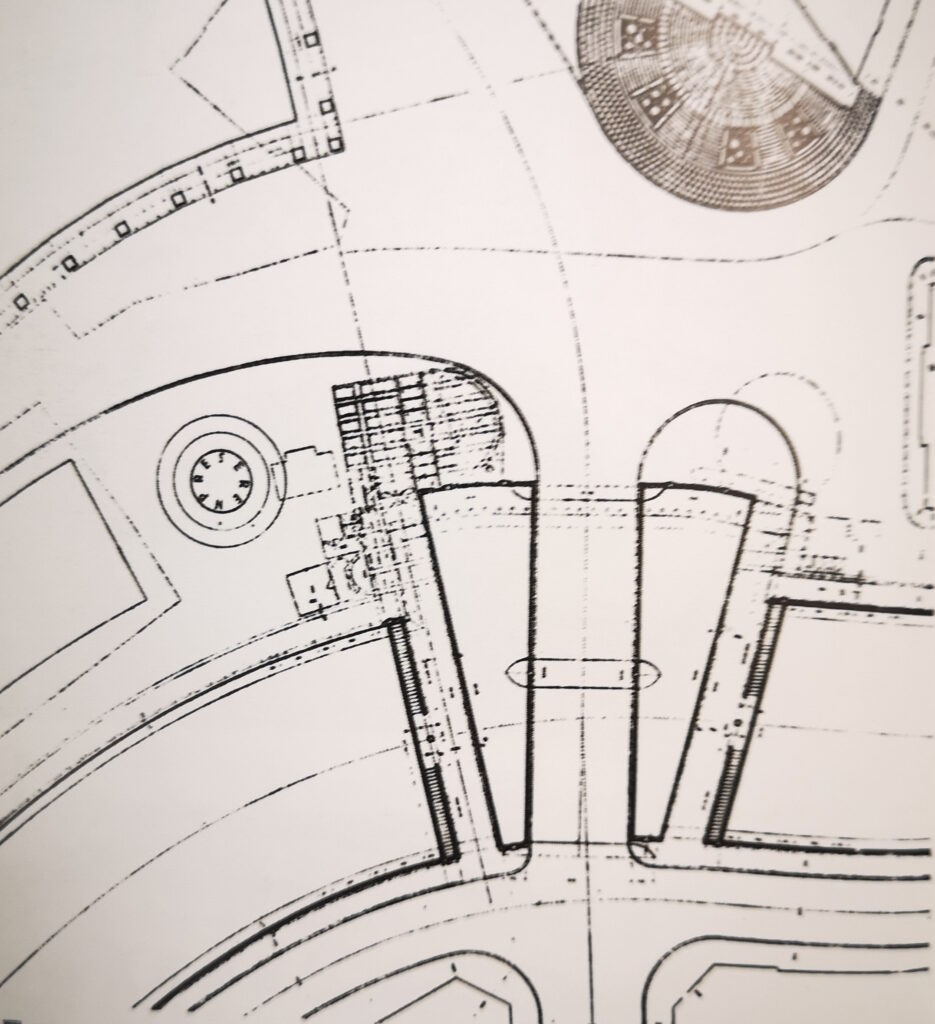
His ingenious plan had two other aims: to better integrate the Ljubljanica river into the urban landscape and to give its banks more character. The solution proposed by Plecnik was very attractive to the town’s decision-makers. As it retained the old bridge, the project was extremely cost-effective. This was one of Plecnik’s strong points! He knew how to do big projects with little. Once you’re there, you’ll notice that the two bridges that have been added are not parallel to the old bridge, but form a funnel so as to direct the large oval space of Place Prešeren (Prešernov trg) towards the river and the pedestrianised Mestni trg. Today, this architectural composition harmoniously unites the two banks of the river.
A plan of the Place des Trois Ponts at the time of its conception.
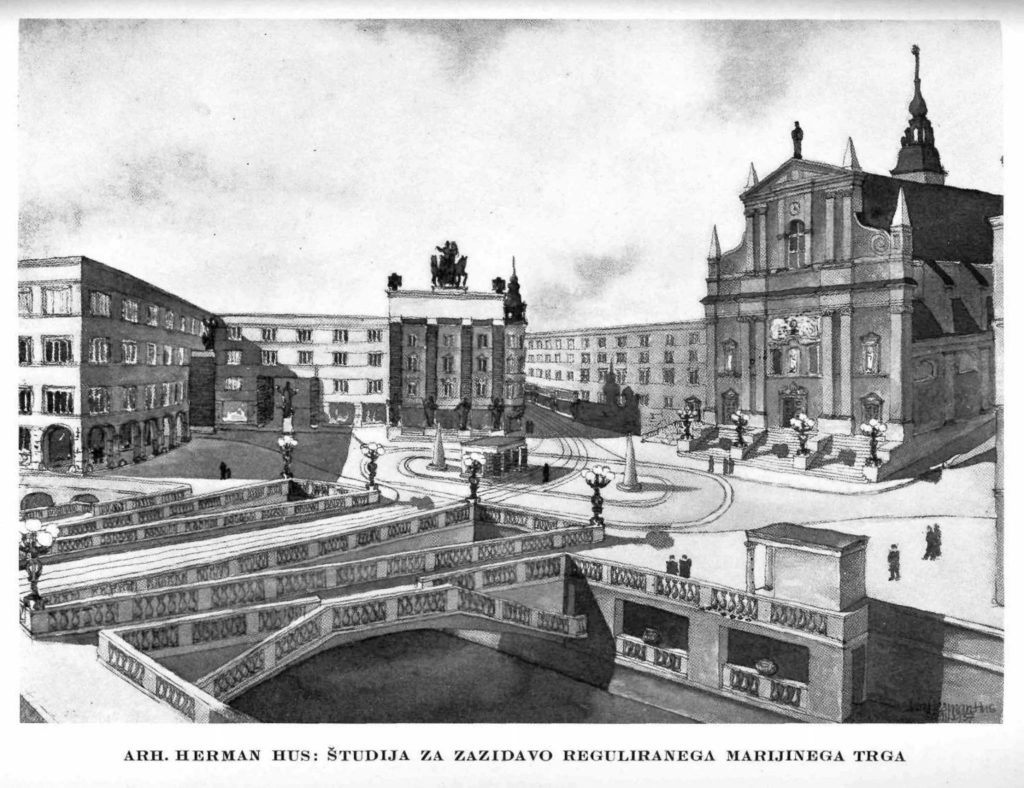
When you get there, walk 30 metres along the river to change your perspective on Three Bridges Square and you will notice that Plecnik added stairs to his two new bridges. He wanted them to resemble the Rialto in Venice, a way of giving the Slovenian capital a more Mediterranean feel. These stairs are just for style! Today, they provide access to free, clean toilets. As you walk along these bridges, take time to notice how the changing rhythm of the railings and lampposts gives the bridges an impression of incessant movement.
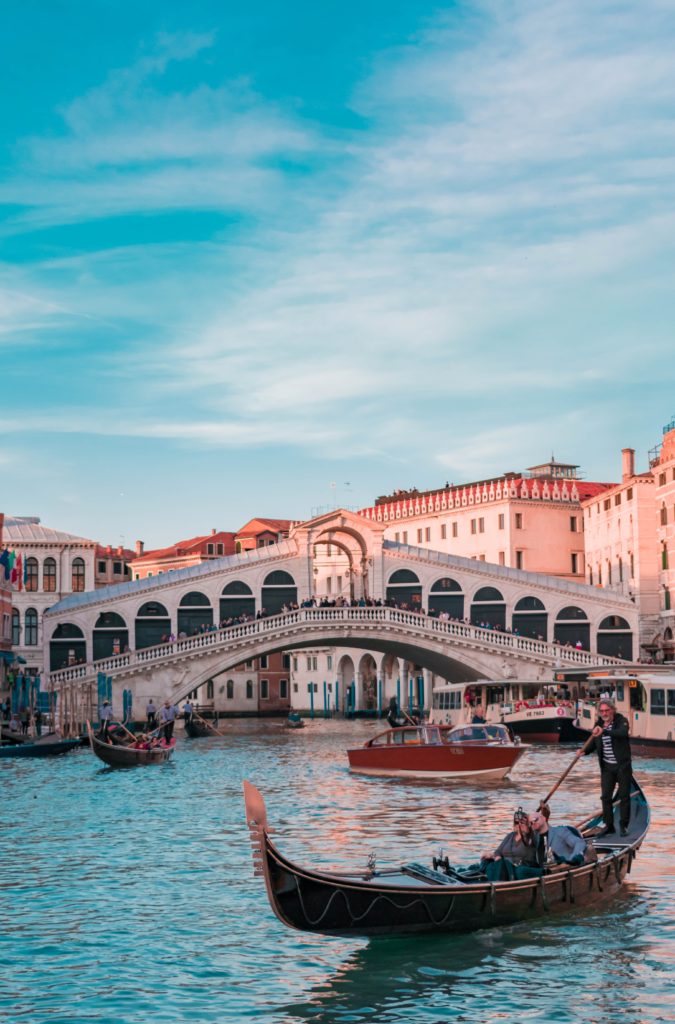
Step aside and you’ll see that these Ljubljana bridges are inspired by the Rialto
Ljubljana’s library, probably its masterpiece
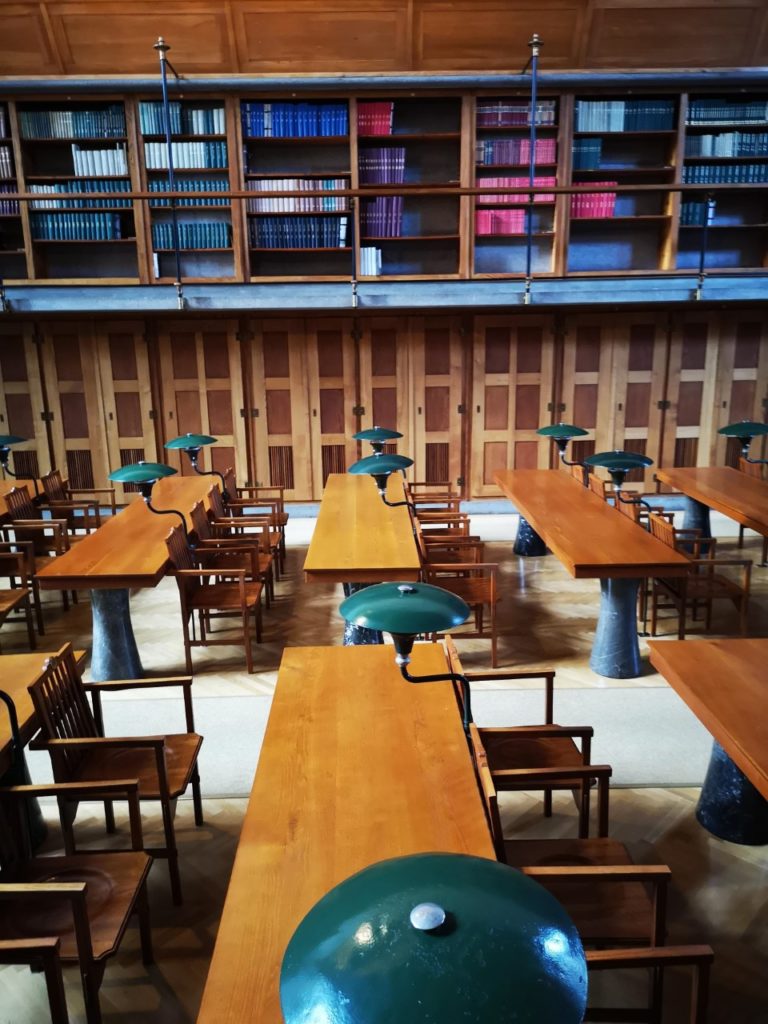
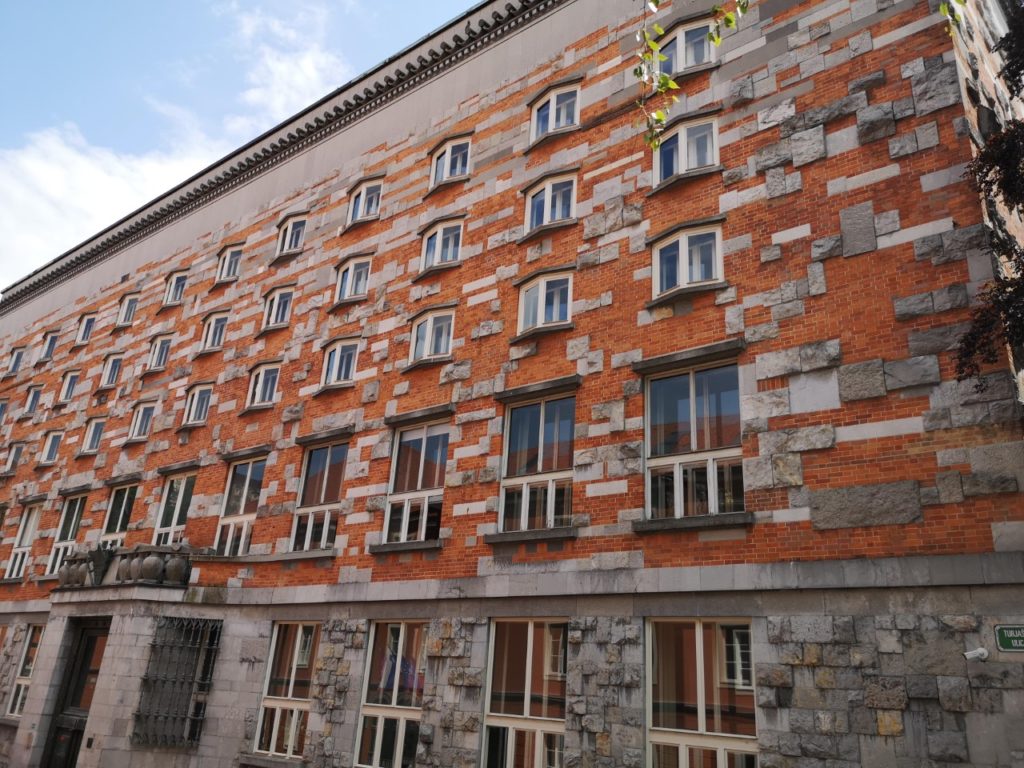
The National University Library is considered one of the masterpieces of Jože Plečnik (the brilliant architect who gave Ljubljana its current face). The size and shape of its library echoes a former princely palace, Auersperg Palace, which once stood on this site. Like many other buildings in Ljubljana, the palace was destroyed by the earthquake of 1895 (Ljubljana is in an earthquake zone). Some of the stones used in the current façade of the library, which is made up of stone and brick, are archaeological remains of this princely palace. Architect Plecnik has given it a new lease of life.
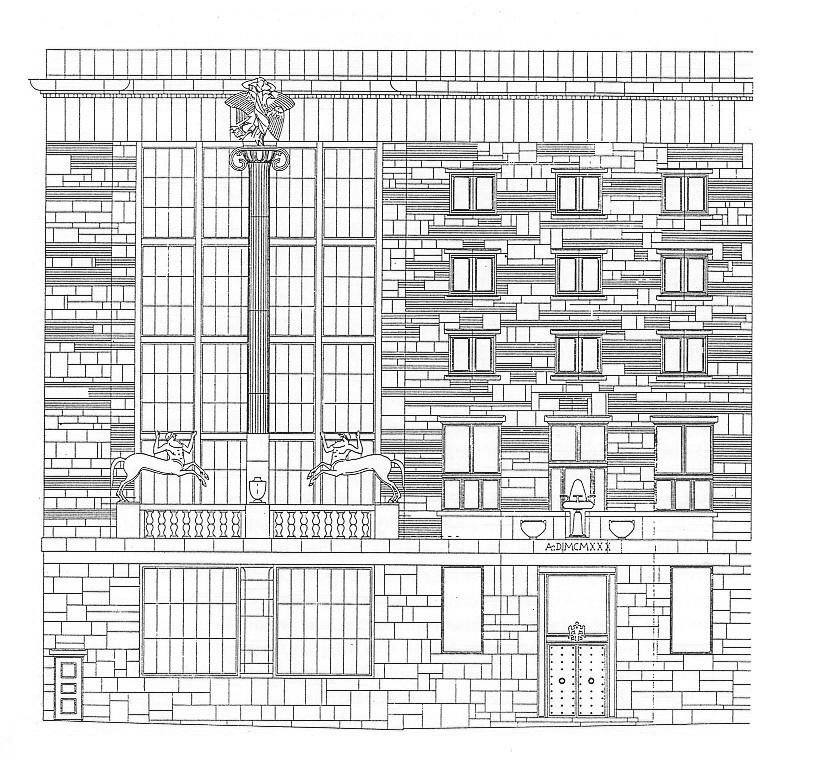
What you’ll notice when you get there : today, these rustic stones set in a smooth brick wall create a stunning effect, accentuated by the building’s dozens of white windows. If you take a closer look at the windows at the top of the building, you’ll realise that they are shaped like half-open books laid vertically. At the top of the building is the roof of a Greek temple, symbolised by a decorative band (Plecnik was always very inspired by ancient Greece).
The Slovenian architect imagined his library as a symbolic temple of knowledge and culture, and as you will discover, he has planned an ingenious and surprising ceremonial for your entry into the building.
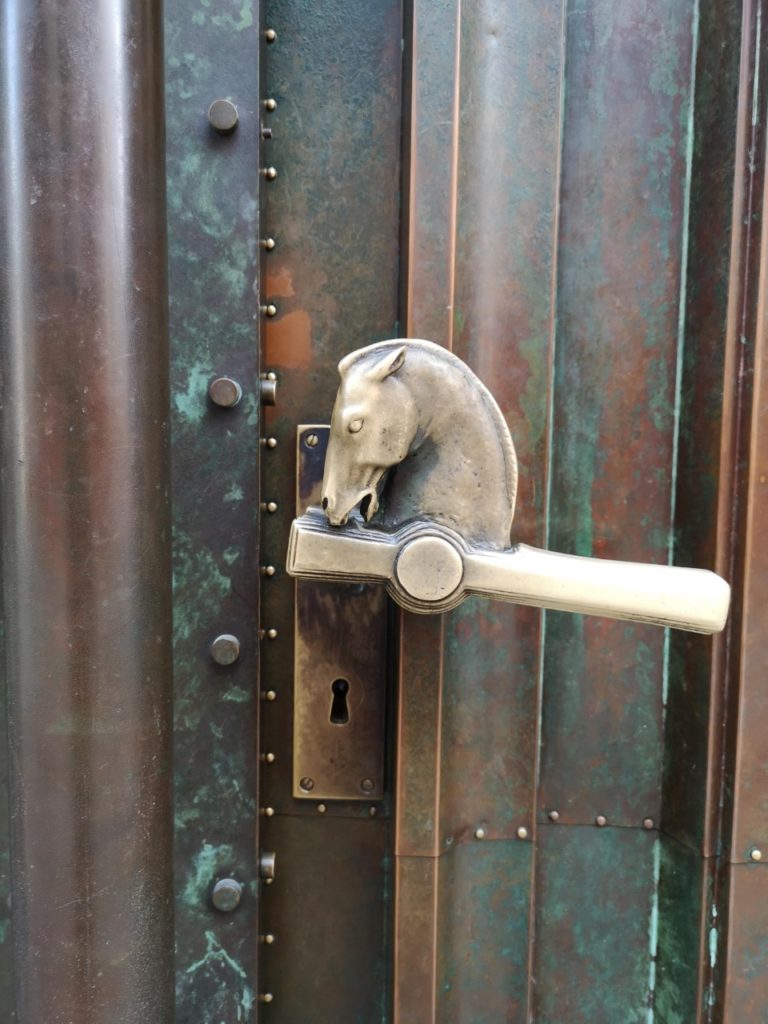
First step: To enter the library, you’ll need to turn a doorknob in the shape of Pegasus, the winged horse of Greek mythology, a symbol of knowledge.
Second step: As in sacred buildings, Plecnik has created a ceremonial entrance in black marble. You must cross a monumental staircase of 32 pillars to reach the spectacular Arts and Crafts style reading room. Your entrance is an ascent through the darkness to the first floor, the light.
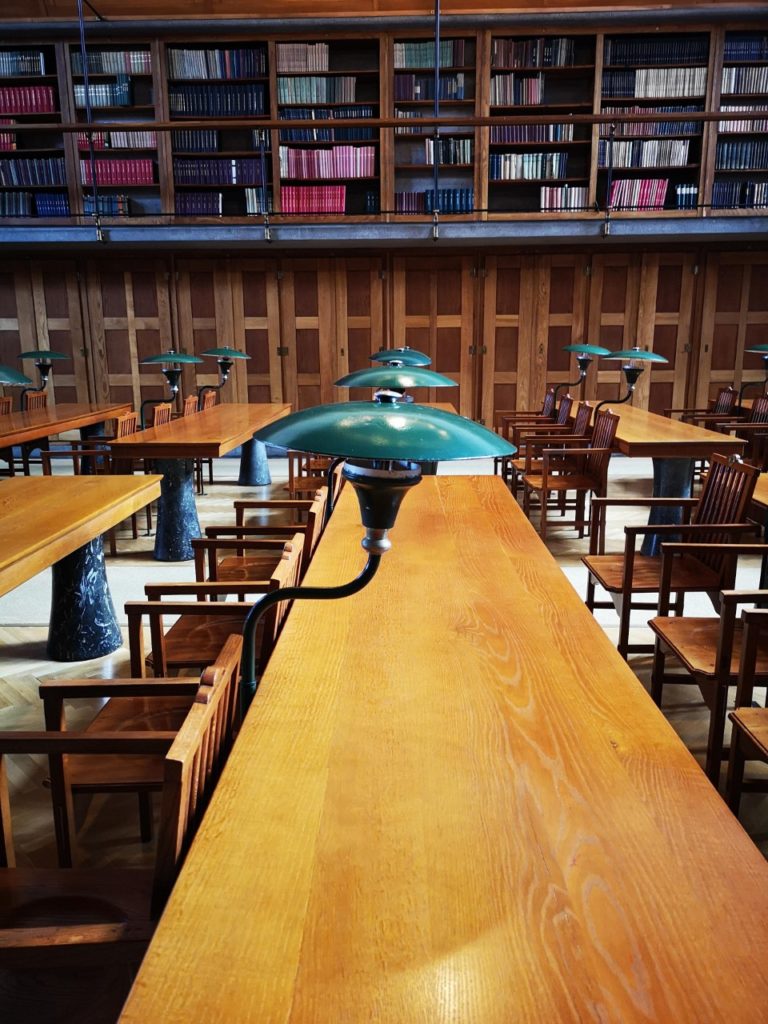
Stage 3: You enter the reading room. Two huge bay windows on either side of the reading room flood it with light. In the evening, the room is lit by light fittings that are as original as they are beautiful.
You have thus passed from the great black staircase in the antique style, darkness – ignorance – to light – knowledge. The reading room is splendid and will remind you of the beautiful libraries of prestigious universities sometimes seen in American films. Its furniture is derived from the industrial aesthetic of the 19th century. The reading room is not open to visitors during the year, as Slovenian students study there, but in summer you can admire it with a €5 entrance ticket (which is a bit steep).
In the basement, you’ll find a secret room where I like to go throughout the year to work.
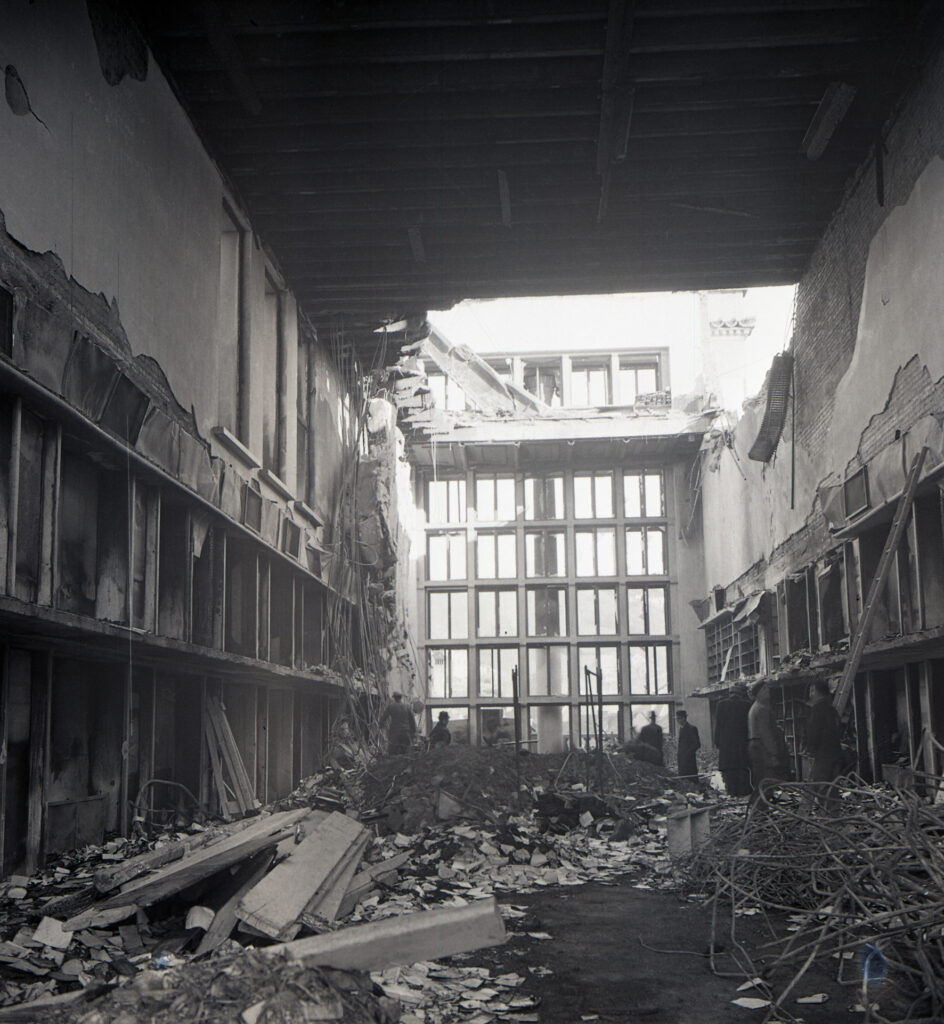
Anecdote: At the end of the Second World War, and only four years after the library was inaugurated, a plane crashed into it. Plecnik took advantage of this disaster to revise his copy and design a different ceiling from his first draft.
The Dragon Bridge
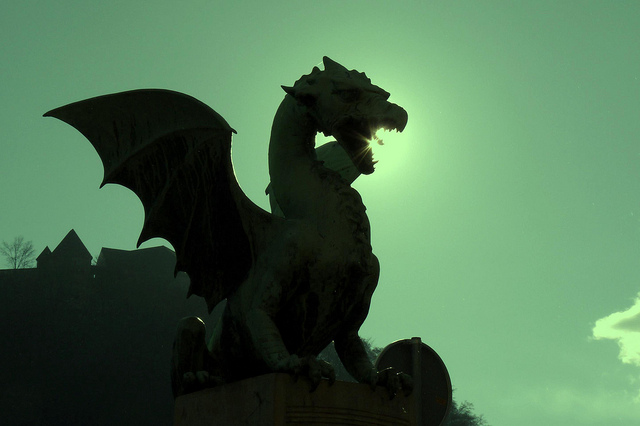
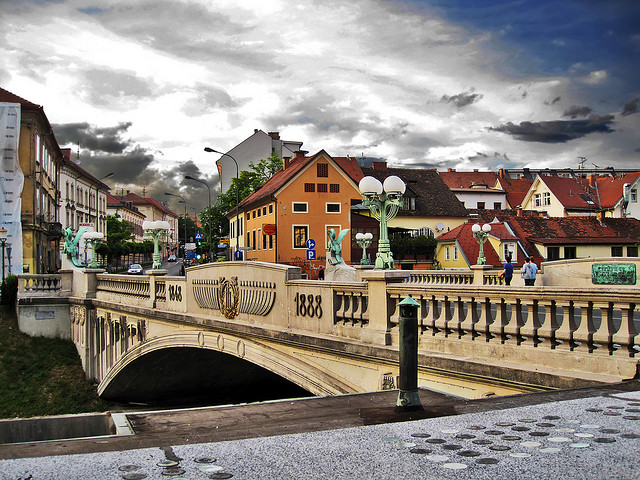
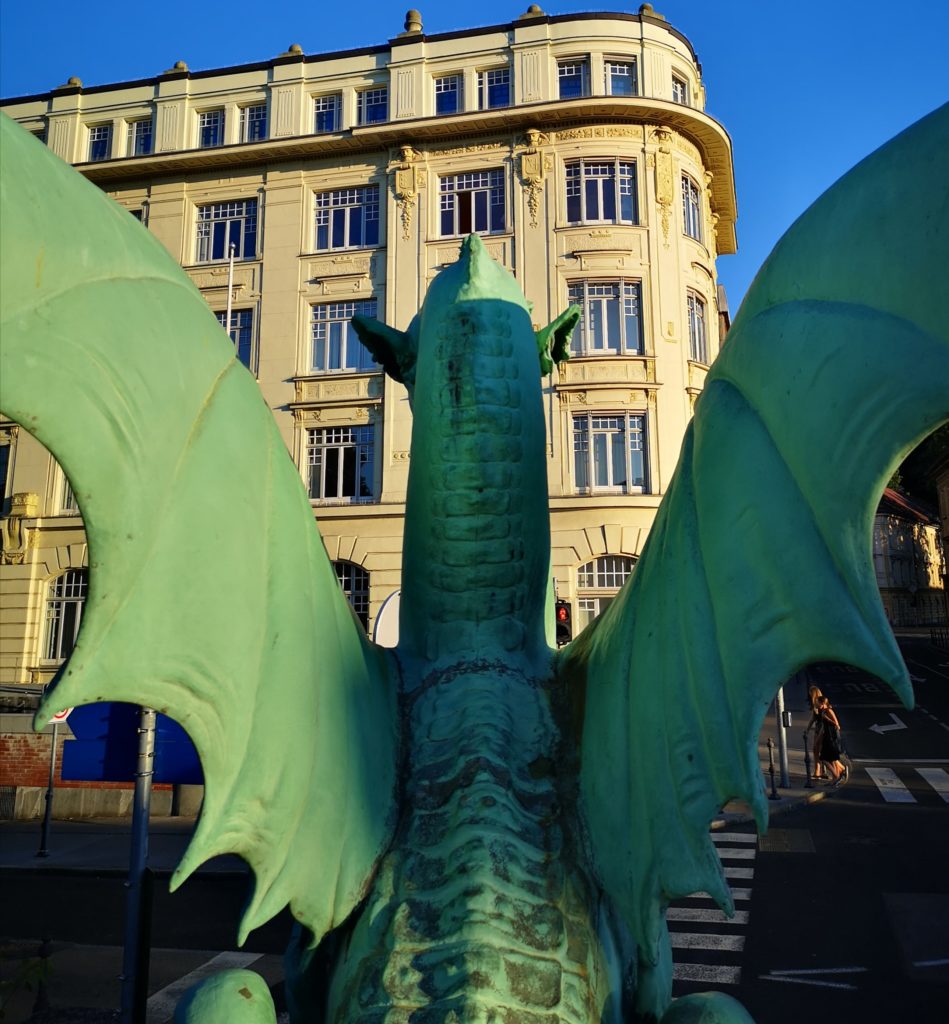
Ivan Hribar, then mayor of Ljubljana, gave the impetus for the construction of this new bridge. The aim was to celebrate the jubilee of Habsburg emperor Franz Joseph (Slovenia was part of the Austro-Hungarian Empire at the time). In reality, the bridge was a ploy to draw Vienna’s attention to the problems facing little Slovenia (and thus obtain financial support for other municipal projects).
The bridge was imagined as part of a larger city.
The construction of a new town hall was envisaged at the time. The original plan featured winged lions at the four corners, and the bridge would now be known as the Lion Bridge. After a change of plan, the entrance to the bridge was marked by four dragons (the dragon is the symbol of Ljubljana).
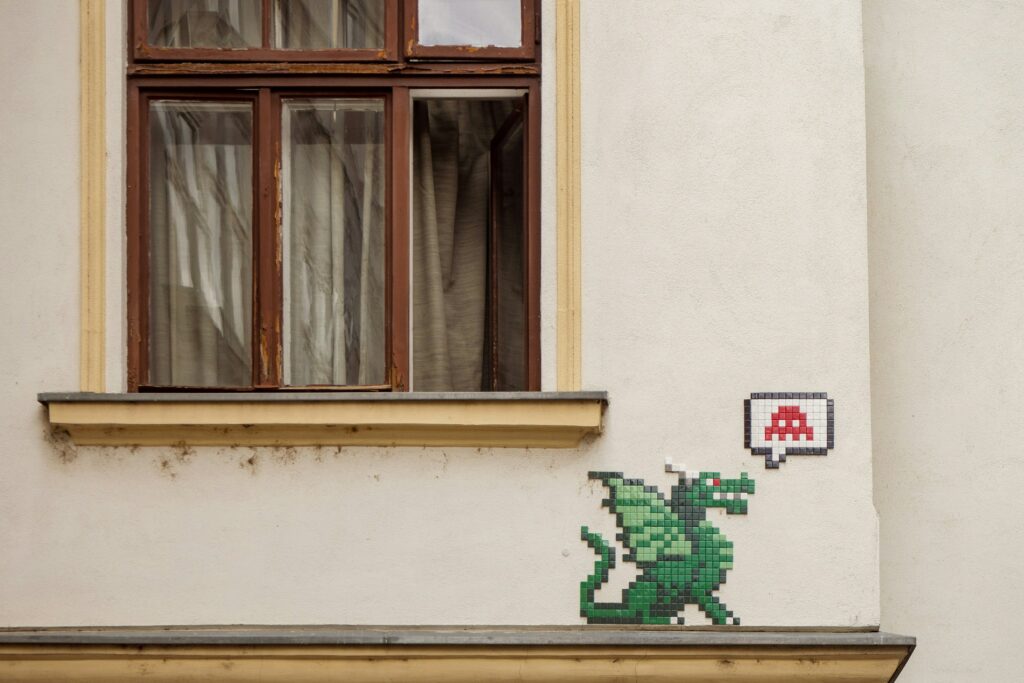
When you reach the centre of the bridge, you will see that the balustrade is decorated with a plaque bearing the initials of Emperor Franz Joseph. At the time, it was the very first asphalt bridge in Ljubljana, a bridge at the cutting edge of technology! Today, tourists love this bridge. A photo with a dragon is a must when visiting Ljubljana. Everyone takes one!
The Cankarjev Dom complex
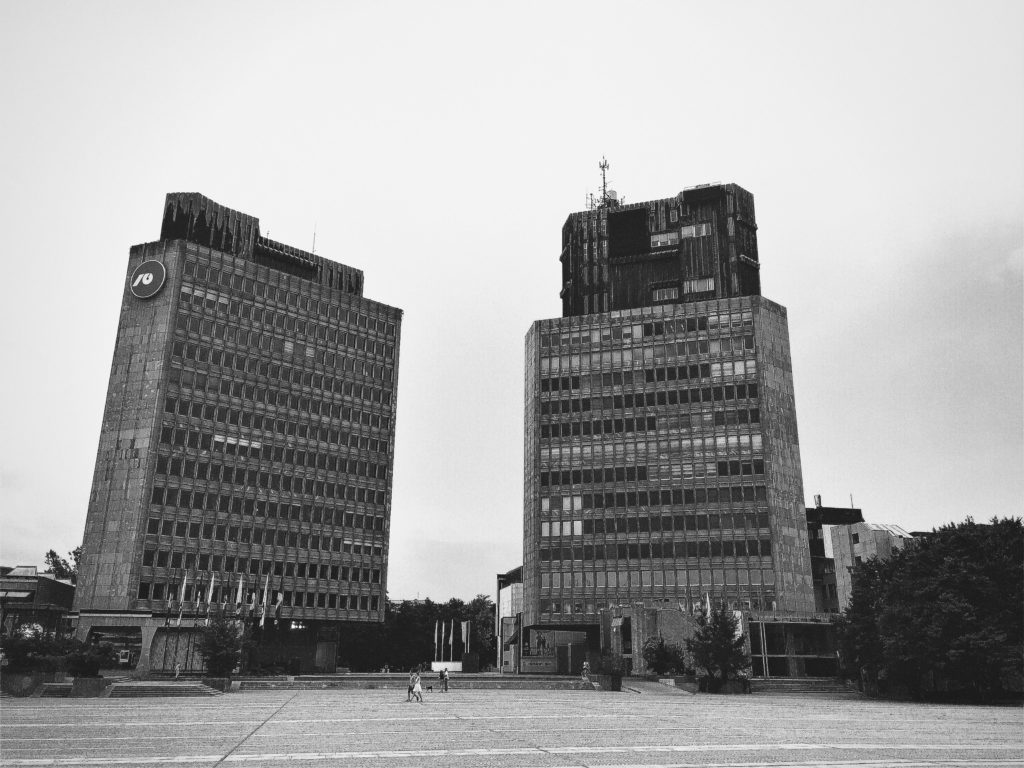
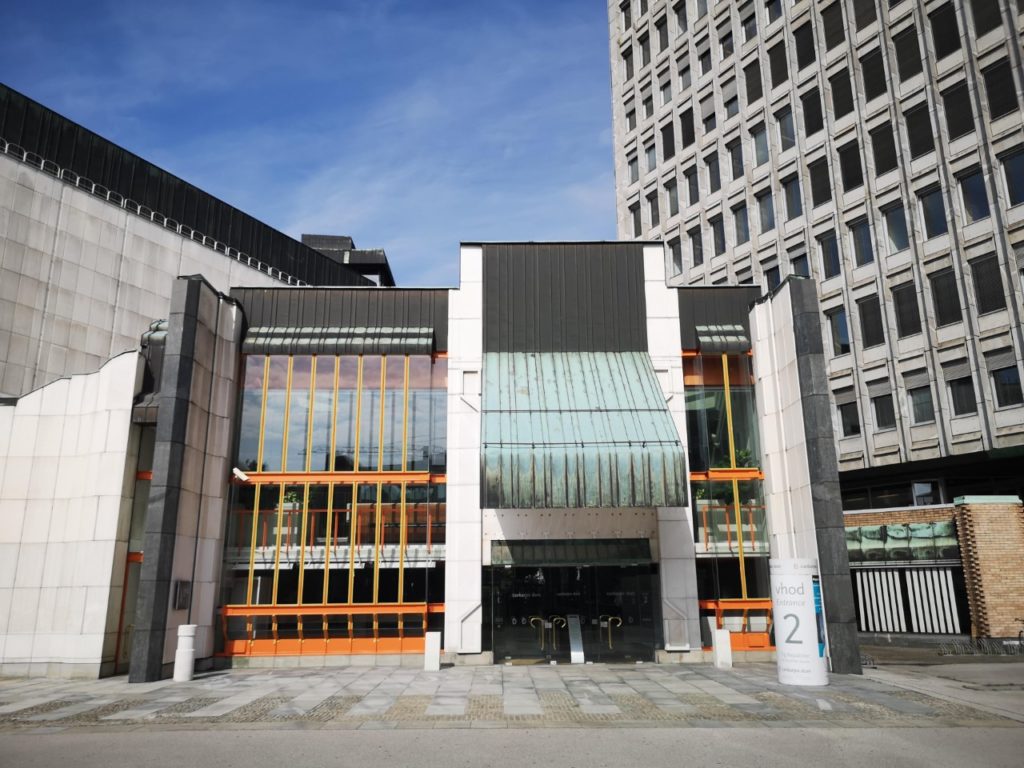
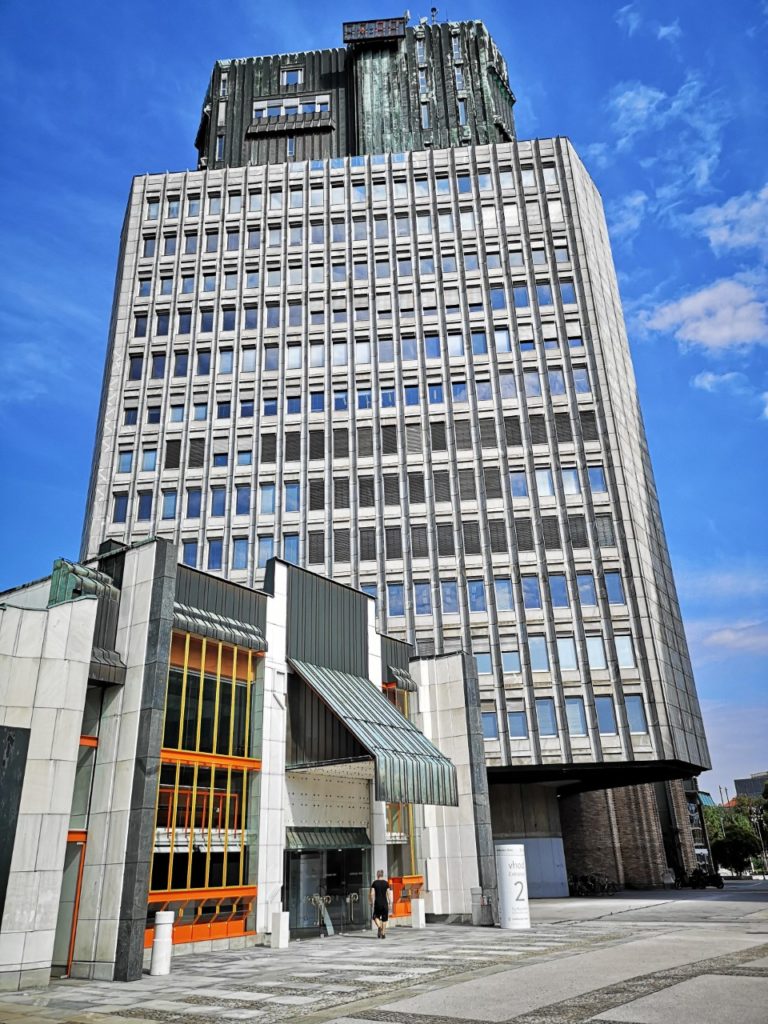
This complex is one of the largest projects in central Ljubljana carried out by a single architect. If you hate concrete, skip ahead to the next building. In 1960, Edvard Ravnikar won first prize in a competition to find an architect for this project for a new Slovenian cultural and political conference centre. The complex was built in the vast gardens of the Ursuline Convent, a convent that still exists today and is now a university residence.
At the time, progress was the order of the day, so it was decided to replace beautiful gardens with this phenomenal amount of concrete.
Today, you’ll find a huge square for large gatherings, an underground car park, two 26-storey towers that housed the Central and Executive Committee of the Communist Party of Slovenia and which face what is now parliament. The whole complex was built gradually over more than 20 years. The original concept has remained more or less intact. The basic features of the project are the two large office towers and the department stores’. The architect then added more buildings.
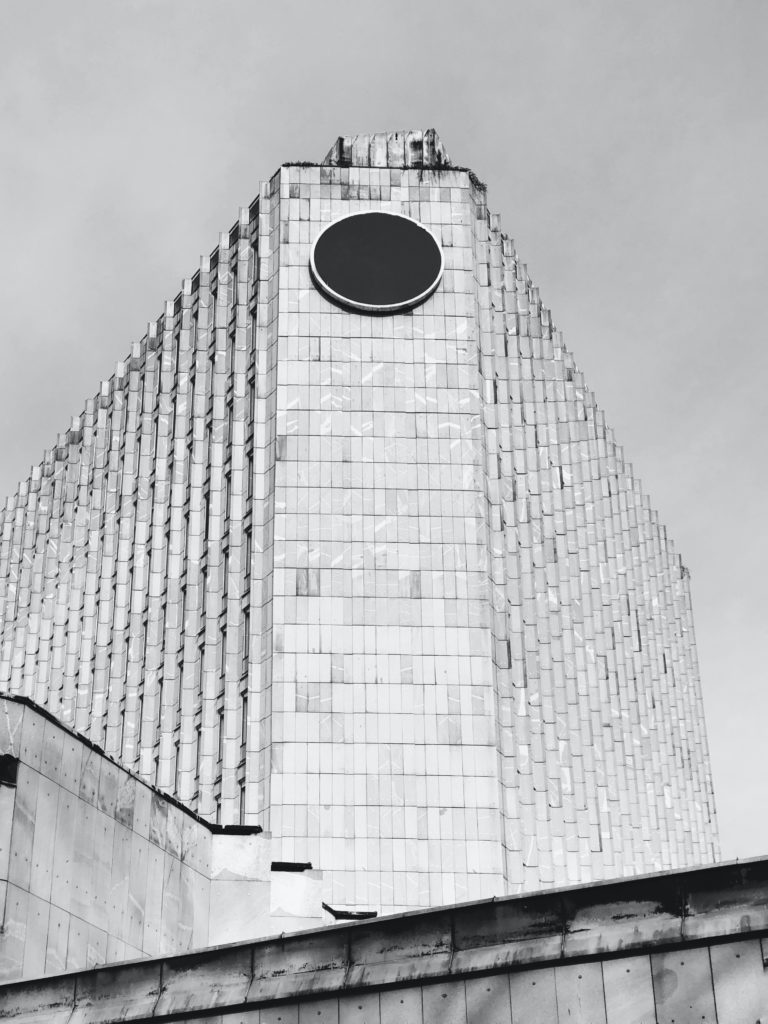
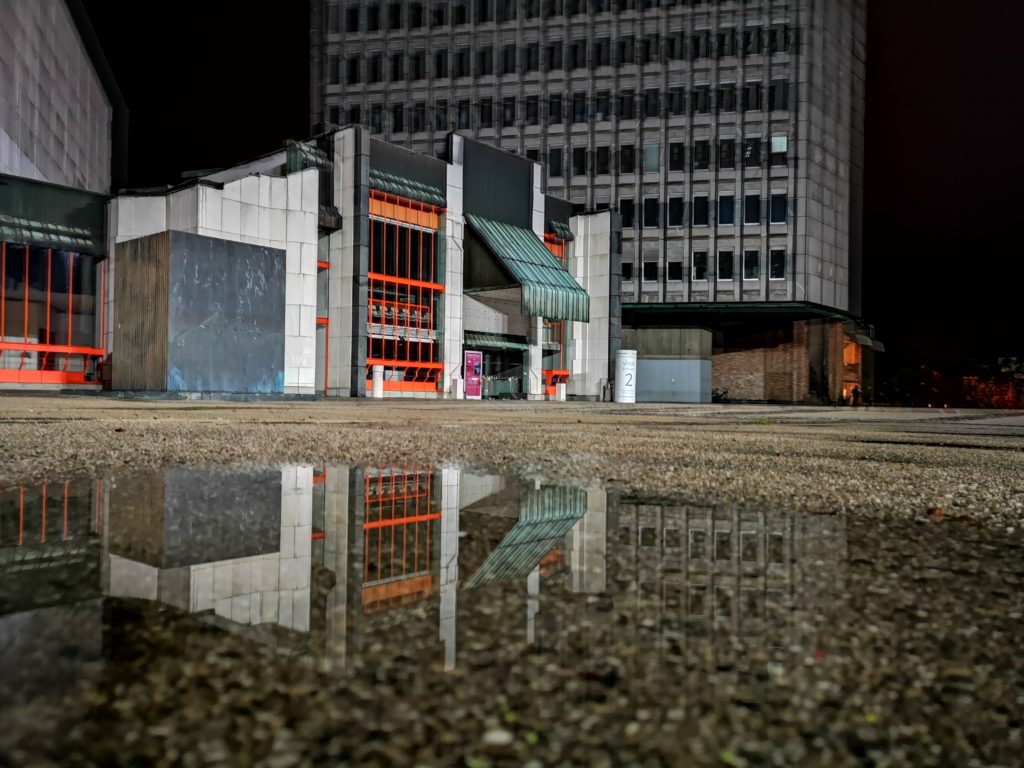
The last part was Cankarjev Dom, with atriums and passageways on several levels. It’s a very surprising building, open to the public, and I recommend that you get lost in it. The two tall, ugly towers you’ll see symbolise a gateway to Ljubljana. Yes, there’s no denying it, this huge concrete complex is ugly. And you won’t like it. Even I, after more than ten years in Ljubljana, often pass by it and still find it rather ugly. Lovers of bucolic cobbled streets won’t set foot in this district.
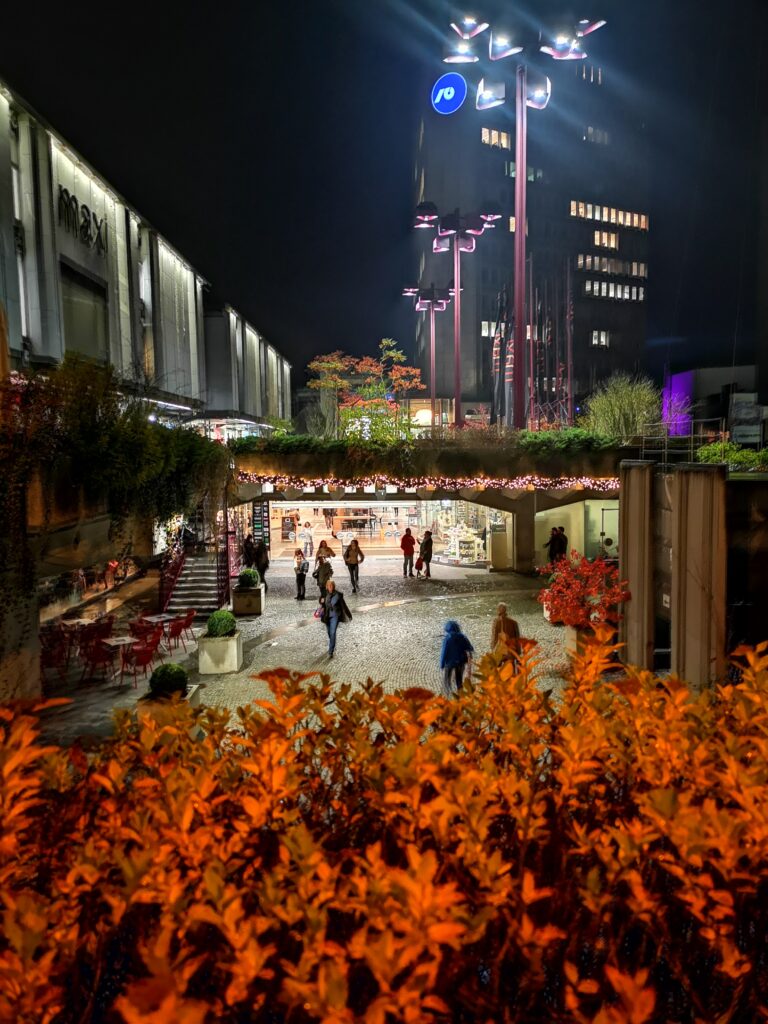
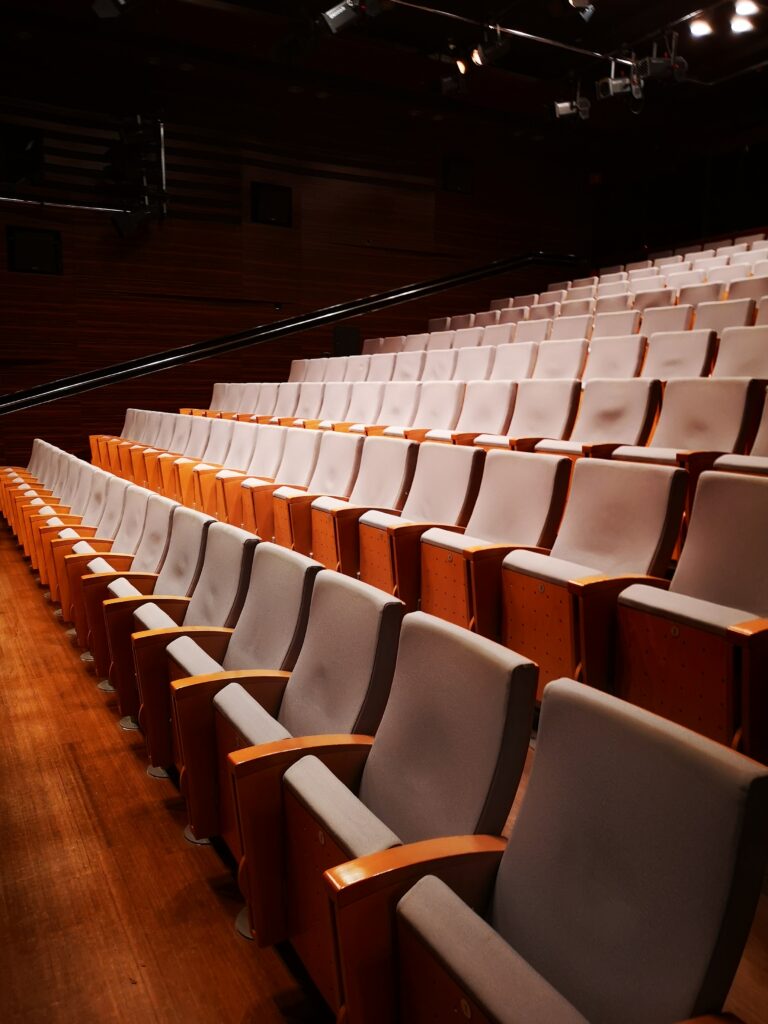
However, you won’t come here to see something beautiful, but to understand a part of Yugoslav history. To ask yourself how, during the Communist period, the magnificent Viennese Secession art nouveau buildings were rejected in favour of massive concreting and utopianism. To convince you of the historical interest of this square in Ljubljana, it was on the poster for the MoMa exhibition in New York dedicated to the utopia of concrete in Yugoslavia. In short, the place is as ugly as it is architecturally and historically interesting.
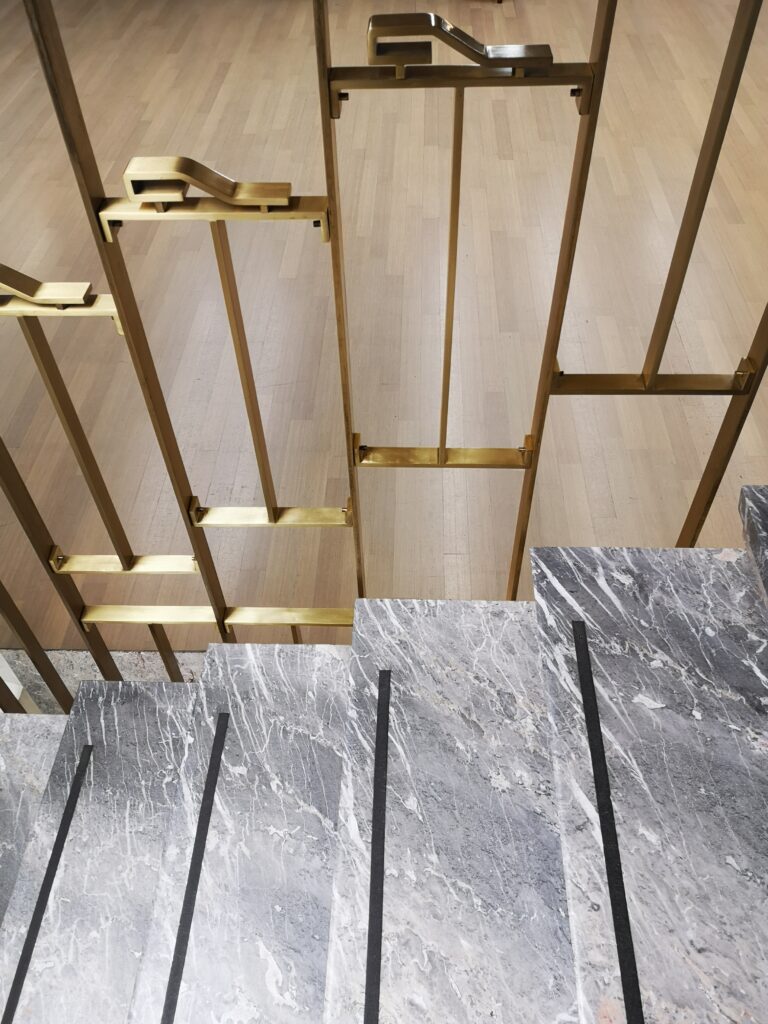
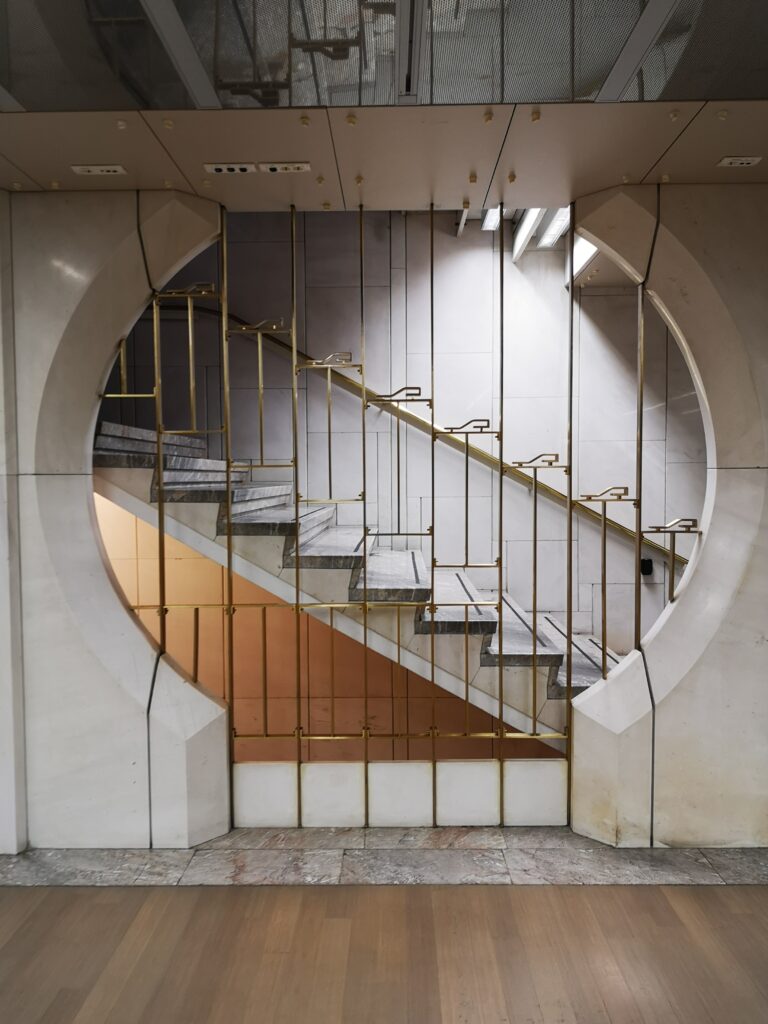
If you decide to go, you should also visit the astonishing underground section and the large halls. This part is open to the public and free of charge.
If you’re interested in the subject of utopian concreting , I recommend reading the MoMa exhibition and this leaflet listing the buildings in Ljubljana, as well as this article from the New York Times.
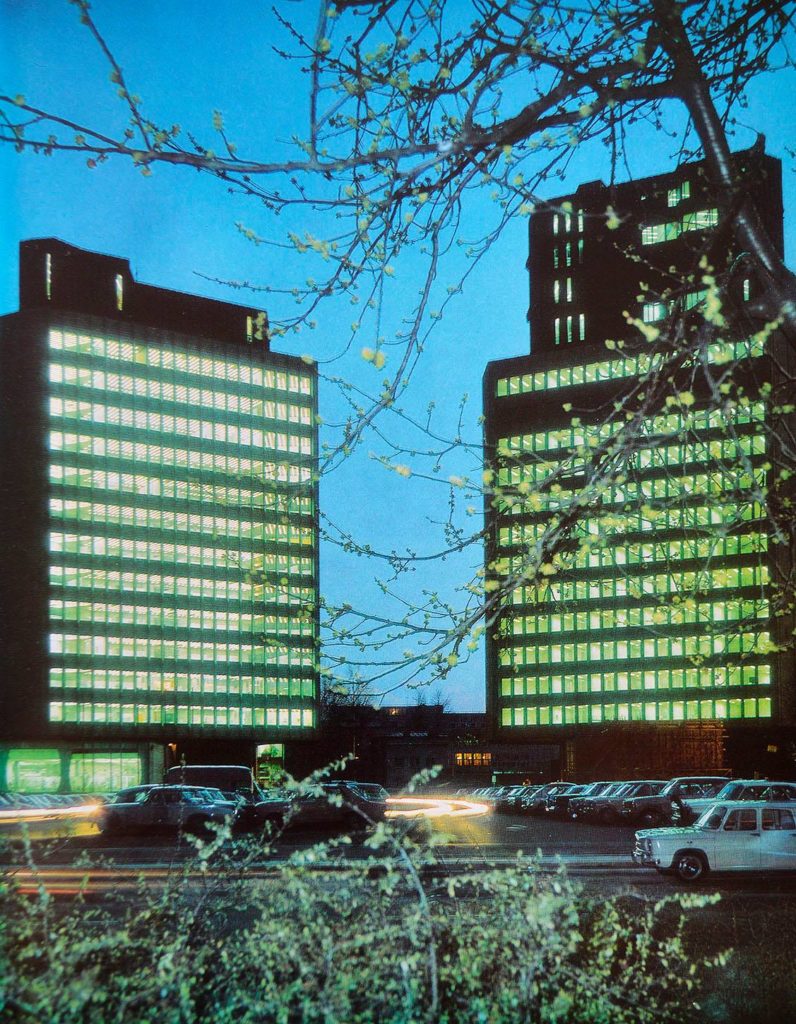
Two modern towers that Ljubljana was proud of just after they were built
Ljubljana’s long Plecnik market
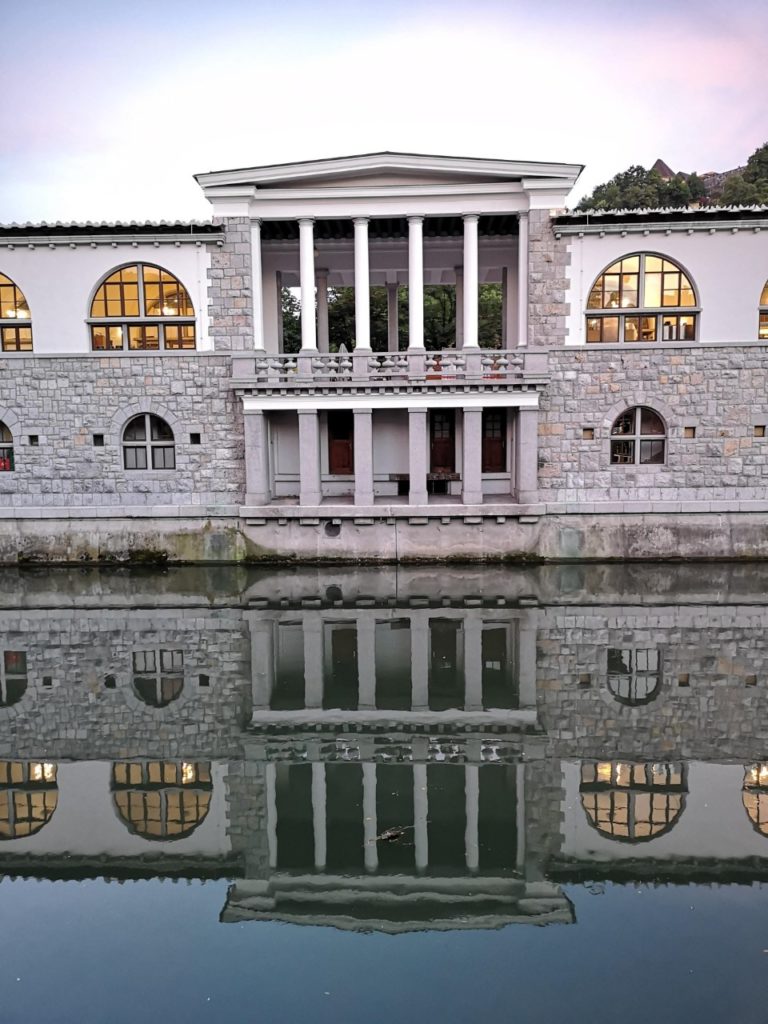
It takes place every morning on Mondays and Fridays. Take a stroll! Rather than hold a market in a large hall, Jože Plečnik proposed turning the entire bank of the Ljubjanica into a market. Today, it’s a huge, slender, airy building that stretches from the central square of the three bridges to the Dragon Bridge. Plecnik was convinced that the market buildings should be an integral part of the centre of Ljubljana. As is often the case, he drew on the register of classical architecture.
Plecnik therefore developed this long, continuous line of buildings between the two bridges, a line consisting of a pavilion, a row of columned kiosks and a temple, all following the curve of the river.
At street level, you’ll see some shops and a secret corridor will lead you to the fish market. At the start of the market, take the hidden spiral staircase.
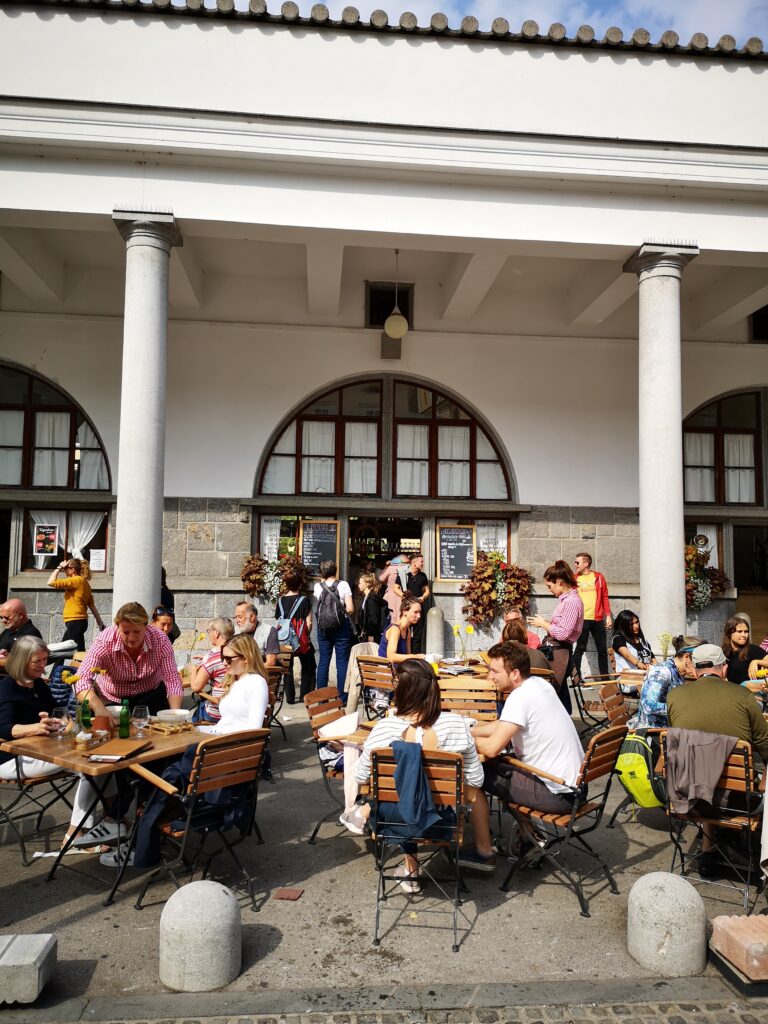
At the beginning of the row of market buildings, Plečnik placed a florist whose building resembles a small temple, today it is a souvenir shop.
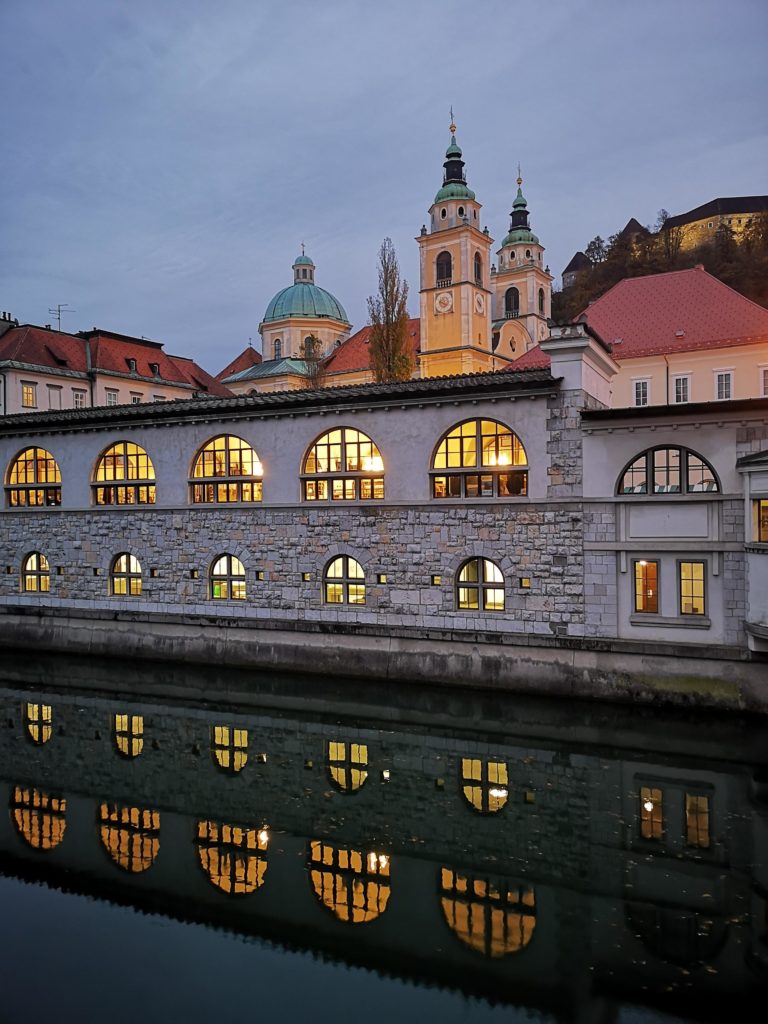
Tip for your visit: Browse through the small shops in the market, under the arcades, where you’ll find the most authentic products or enjoy a delicious local lunch thanks to the many restaurants located under the arcades.
An exhibition has been devoted to him at the Plecnik Museum…
Neboticnik, Yugoslavia’s first skyscraper
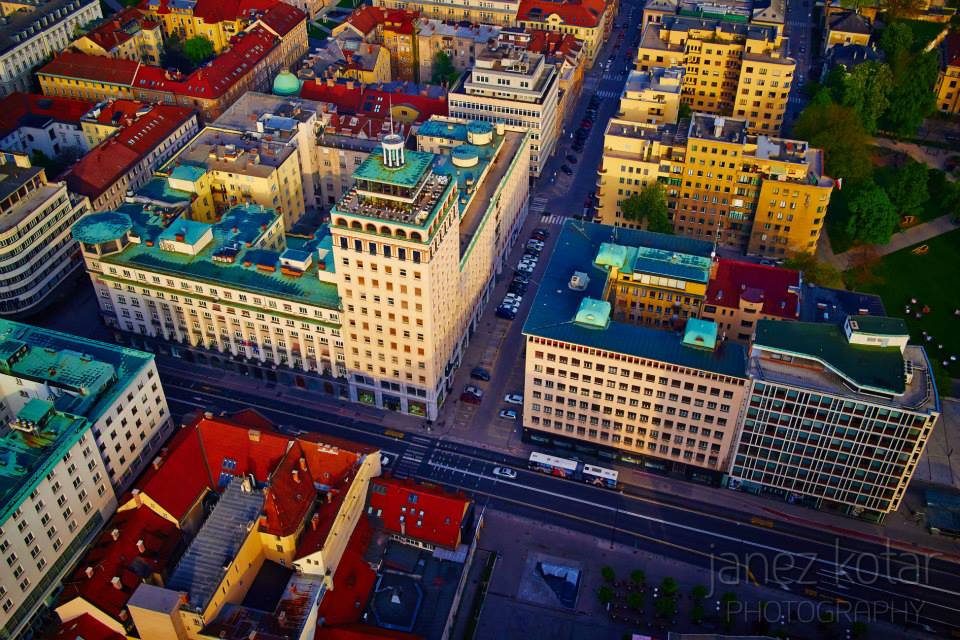
This skyscraper from the 1930s is a secret spot not to be missed on a visit to Ljubljana. Few tourists find its entrance and know that there is a panoramic terrace at the very top of the building. It’s such a great place that I’ve devoted an article to it.
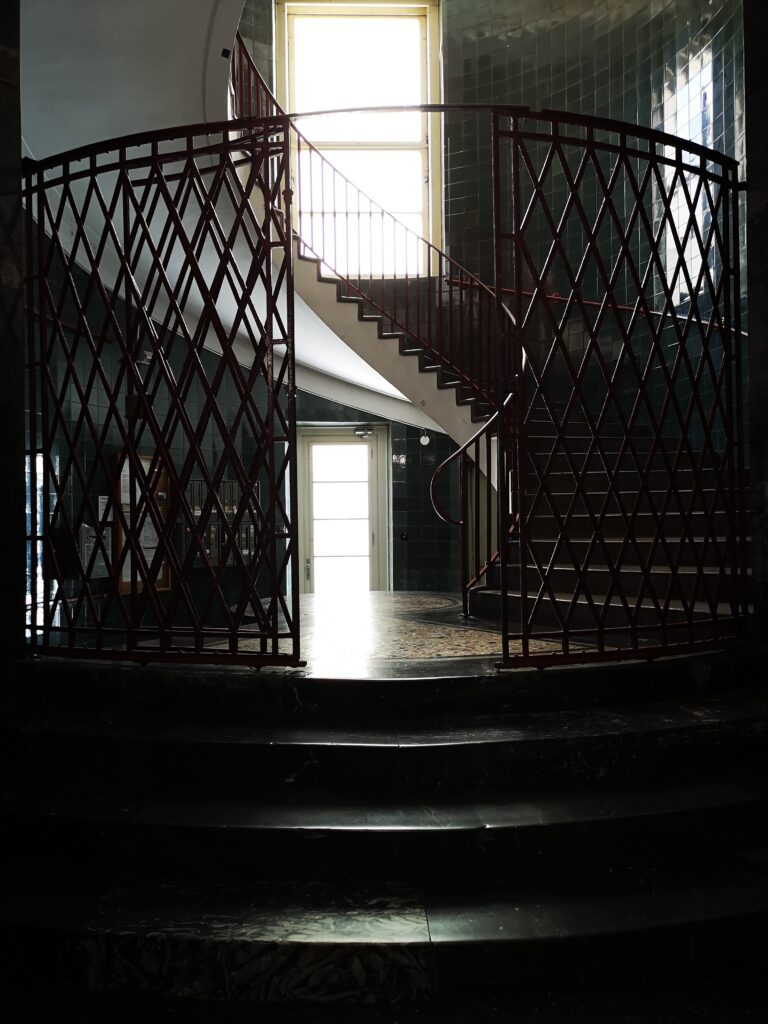
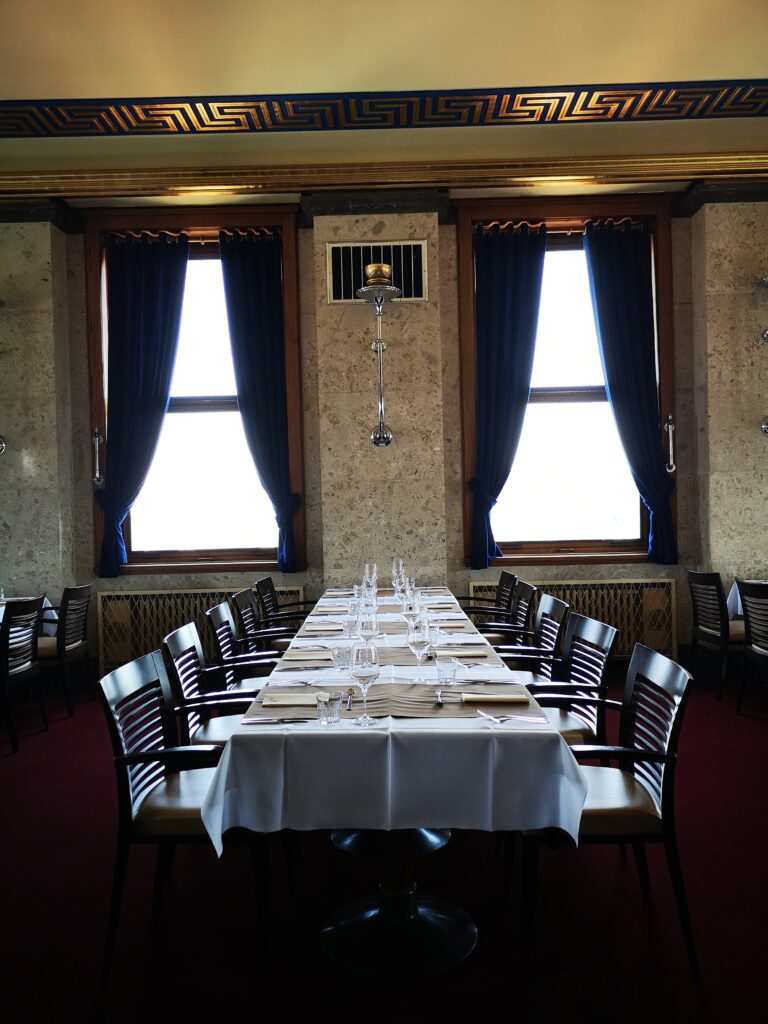
At the top of this beautiful building, you’ll have a great time enjoying a morning coffee high above the ground or a panoramic cocktail at sunset.
The terrace is 360°, so you can choose the table with your favourite view of Ljubljana (view of the mountains, the city or the immense forest of Tivoli Park). Go back down the stairs! They’re well worth the diversions.
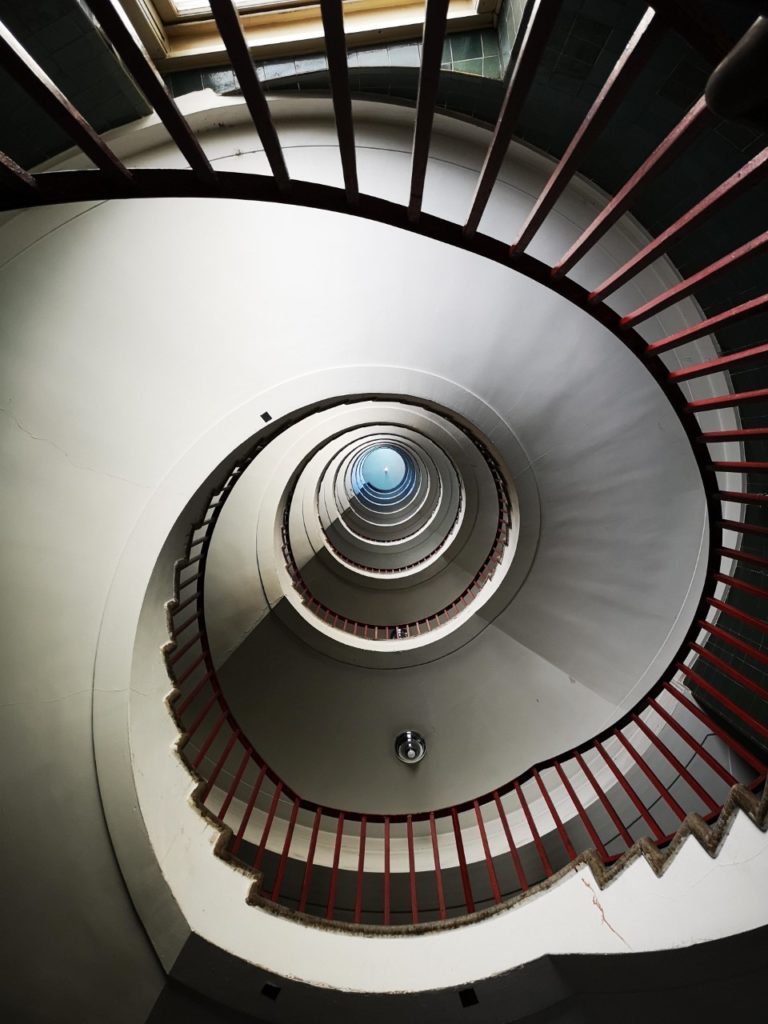
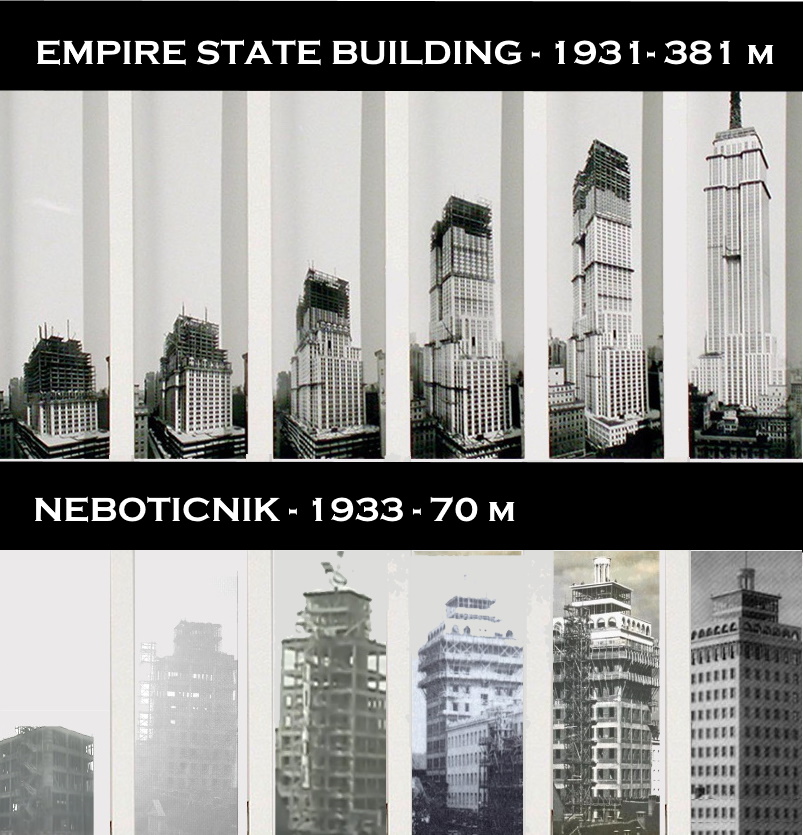
In the early 1930s , like the rest of the world, the Kingdom of Yugoslavia was watching what was happening on the other side of the Atlantic. New York was on the rise! On 1 May 1931, between 33rd and 34th Streets on Fifth Avenue in Manhattan, the Empire State Building opened its doors. It measures 381 metres. At the same time, influenced by New York, Ljubljana began building its own skyscraper on its main avenue, Slovenska cesta. On 21 February 1933, Neboticnik opened its doors. From the terrace of its panoramic café, the people of Ljubljana could admire the city. Do as they did during your stay!
Other remarkable buildings in Ljubljana
Here are five other buildings that are well worth a visit.
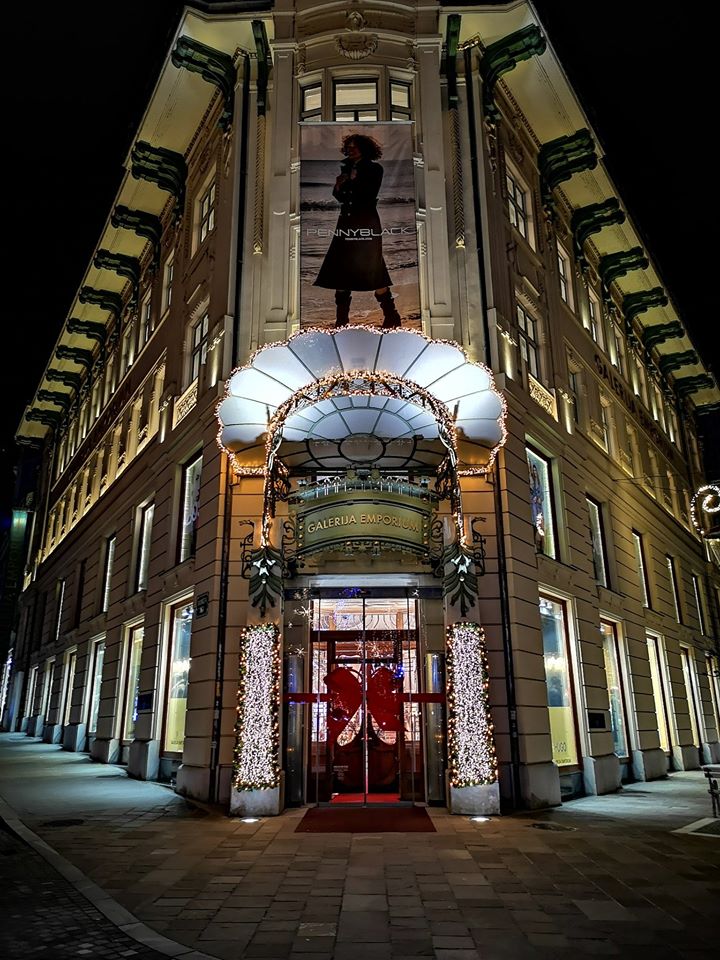
Centromerkur: The Centromerkurn is located in the heart of Ljubljana. It is a magnificent example of Art Nouveau architecture in Slovenia. Above all, it was the city’s first department stores’ in 1903. Step inside to see its magnificent staircase. This emblematic building is distinguished by its elegant decorative elements, facades adorned with floral motifs and wrought-iron balconies. This department stores’ reflects the city’s economic and cultural boom in the early 20th century.
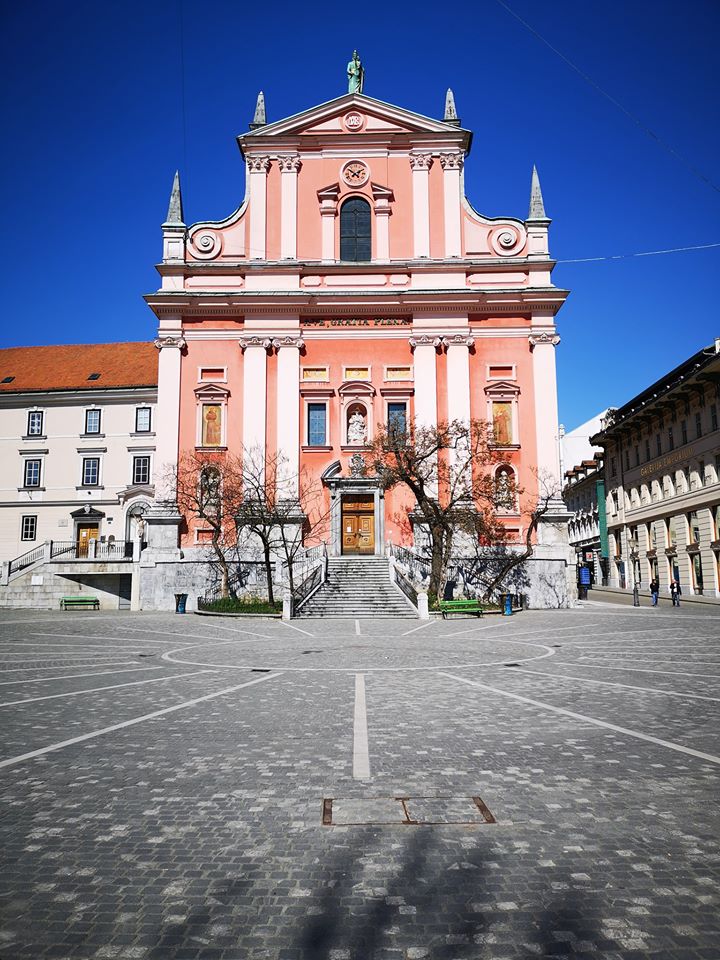
The Franciscan church: Located in the central square. You won’t want to miss it.
It’s one of the Slovenian capital’s most recognisable monuments. Built in the 17th century in Baroque style, its distinctive pink façade and symmetrical towers dominate the city’s central square. Inside, you can admire magnificent frescoes and a marble altar by the artist Francesco Robba. This place of worship is still active. I love the contrast between the calm inside the church and the Piazza Preseren.
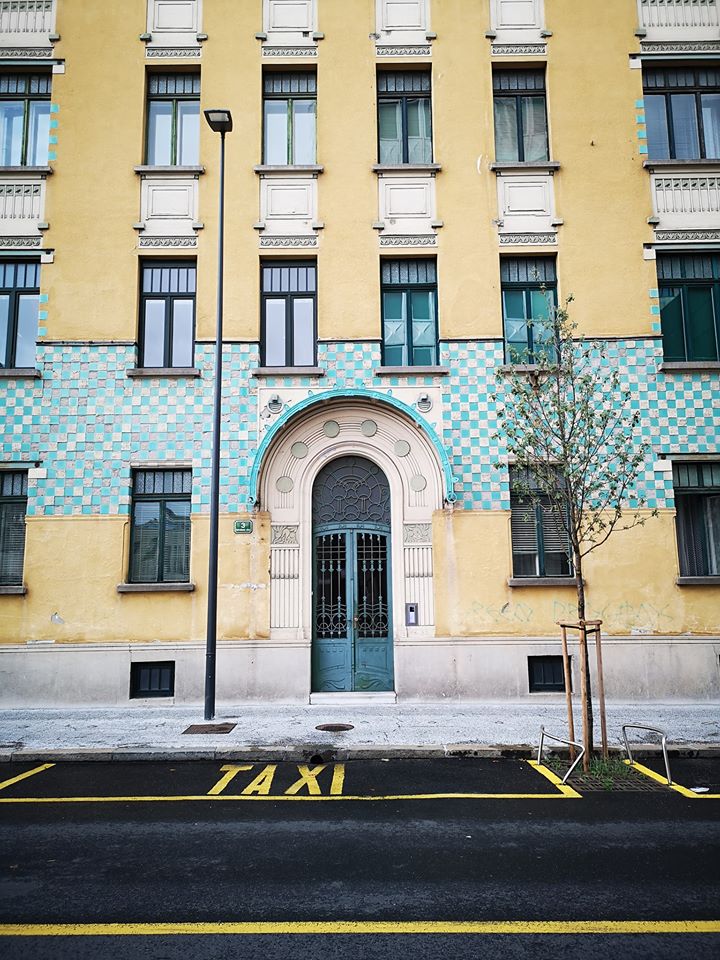
Viennese Secession Art Nouveau buildings: There are plenty of them in Ljubljana. Take the time to observe all their details. I live in one of them.
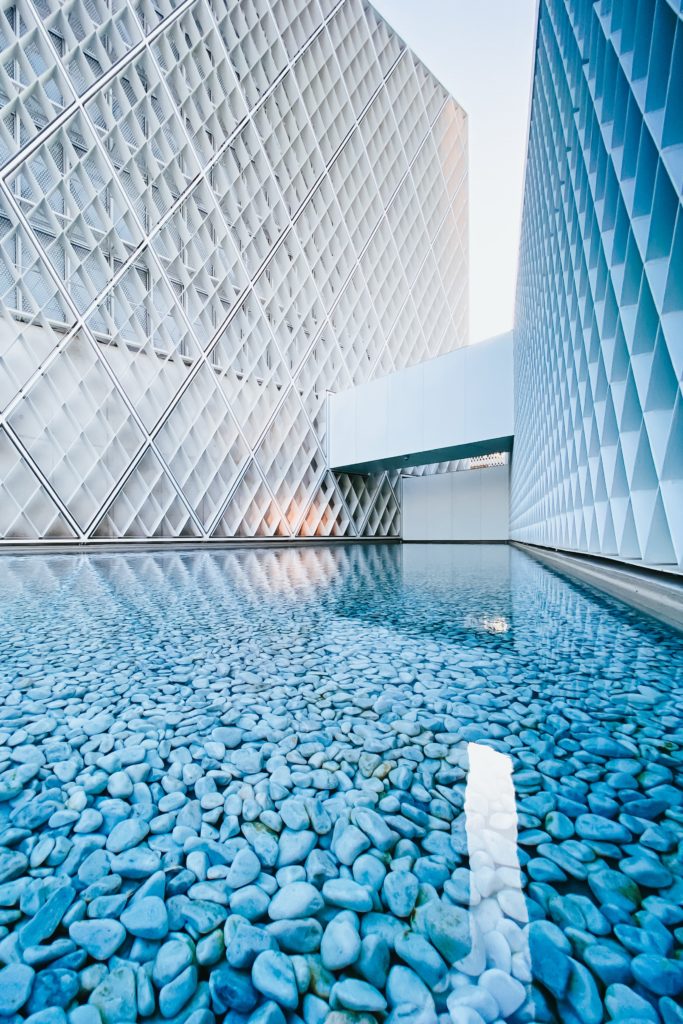
The new mosque: Superb architecture next to the Generalissimo Railway Museum
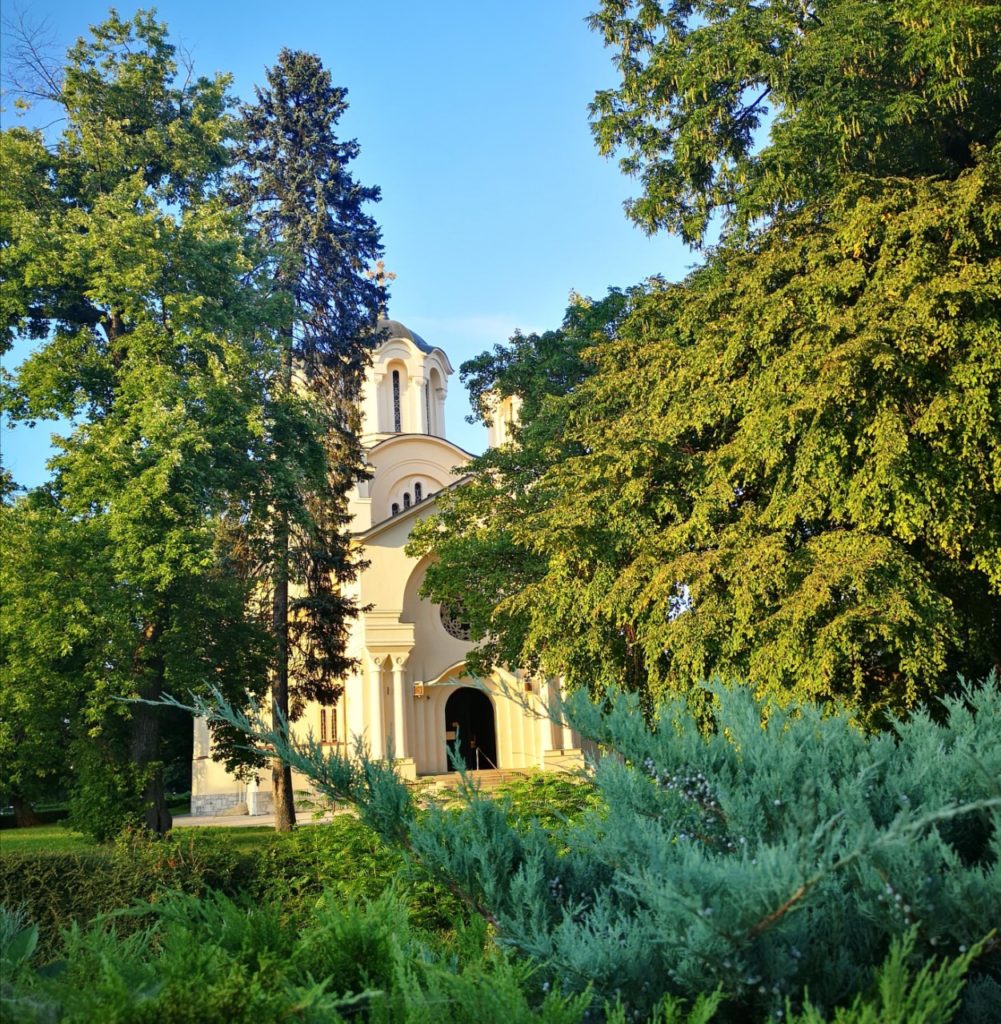
The Orthodox Church is one of Ljubljana’s most unusual sights.
